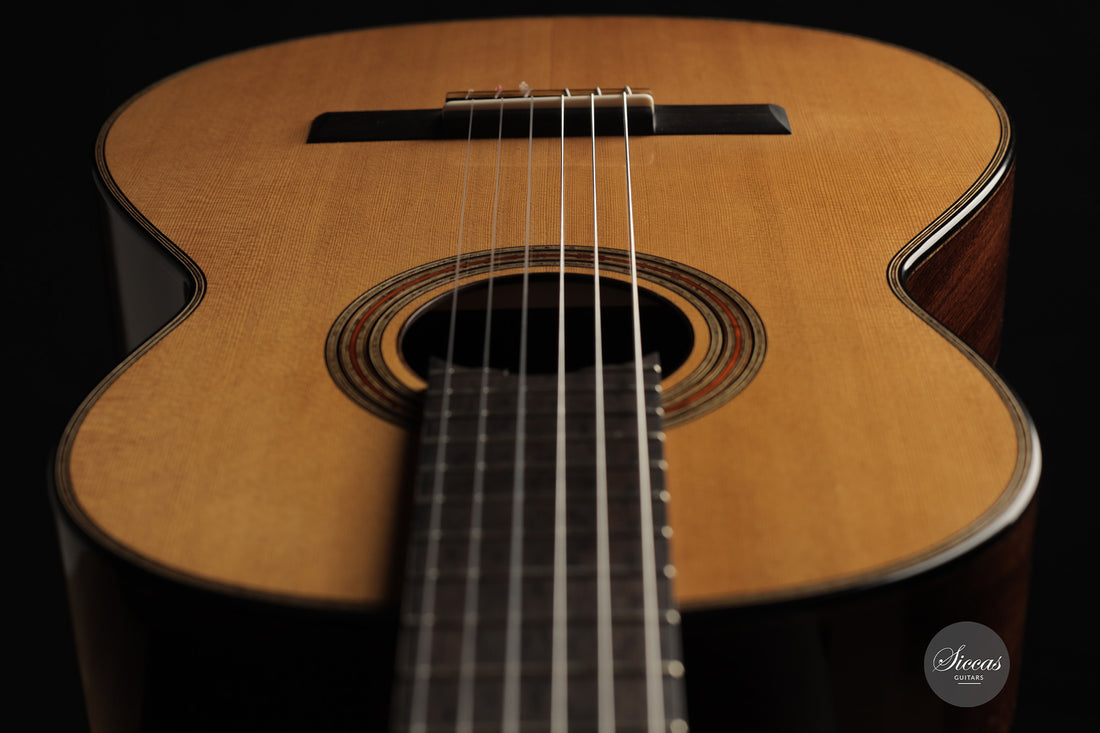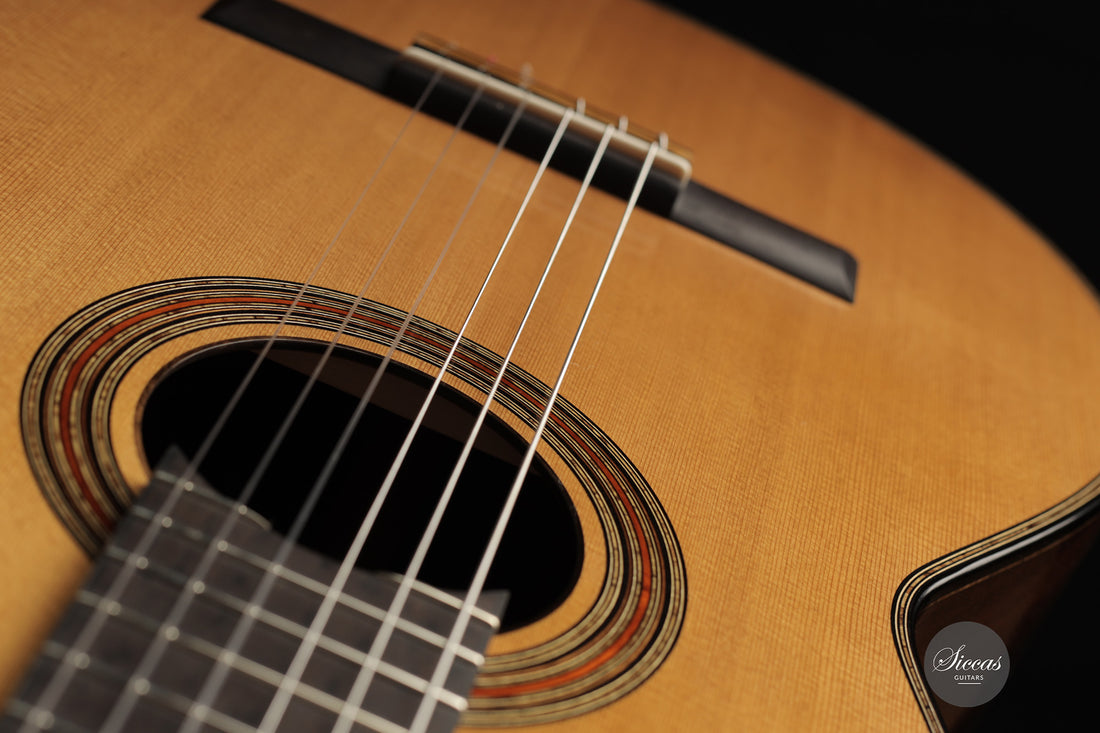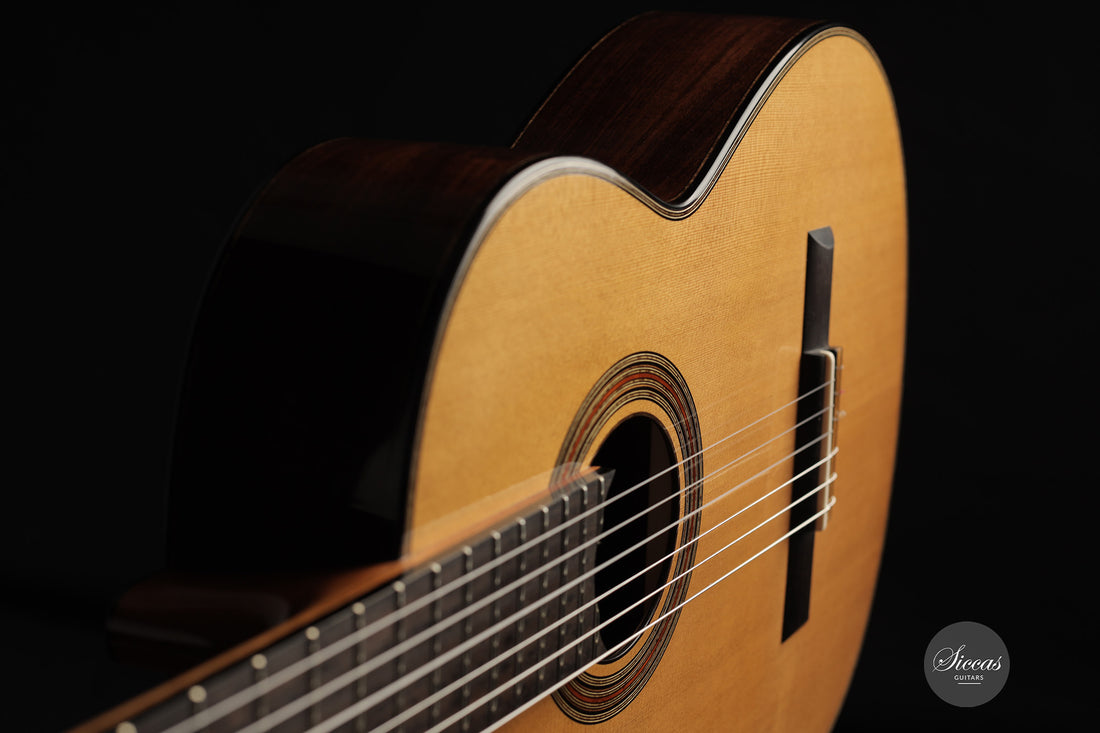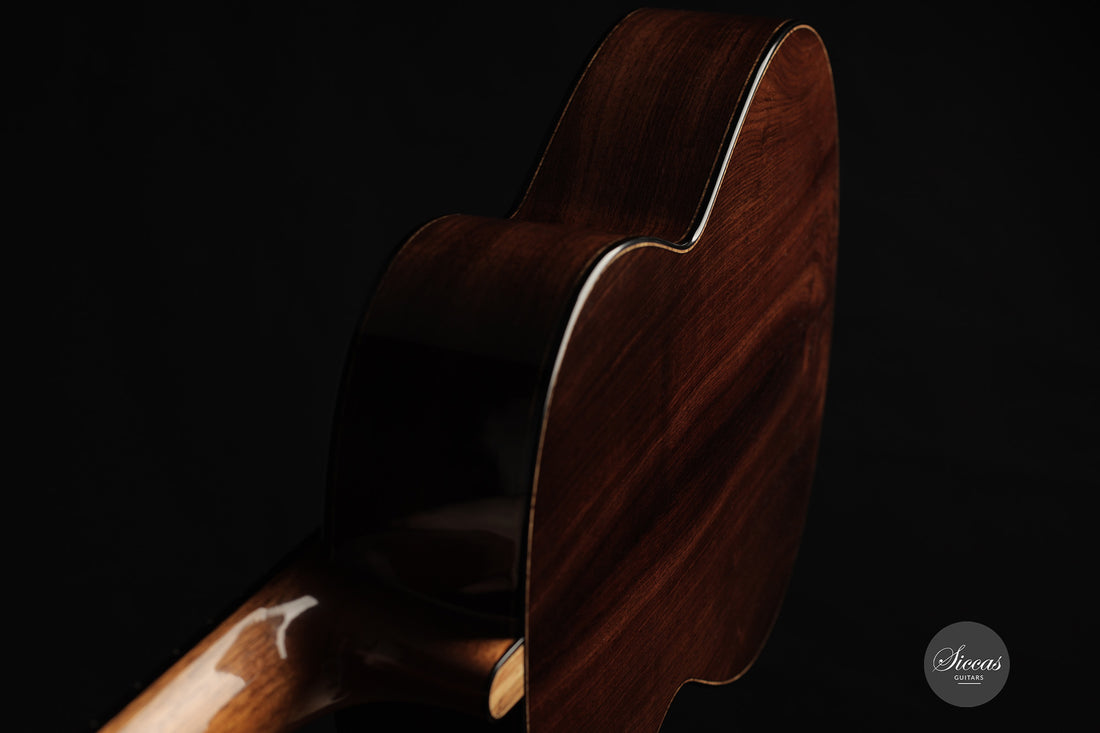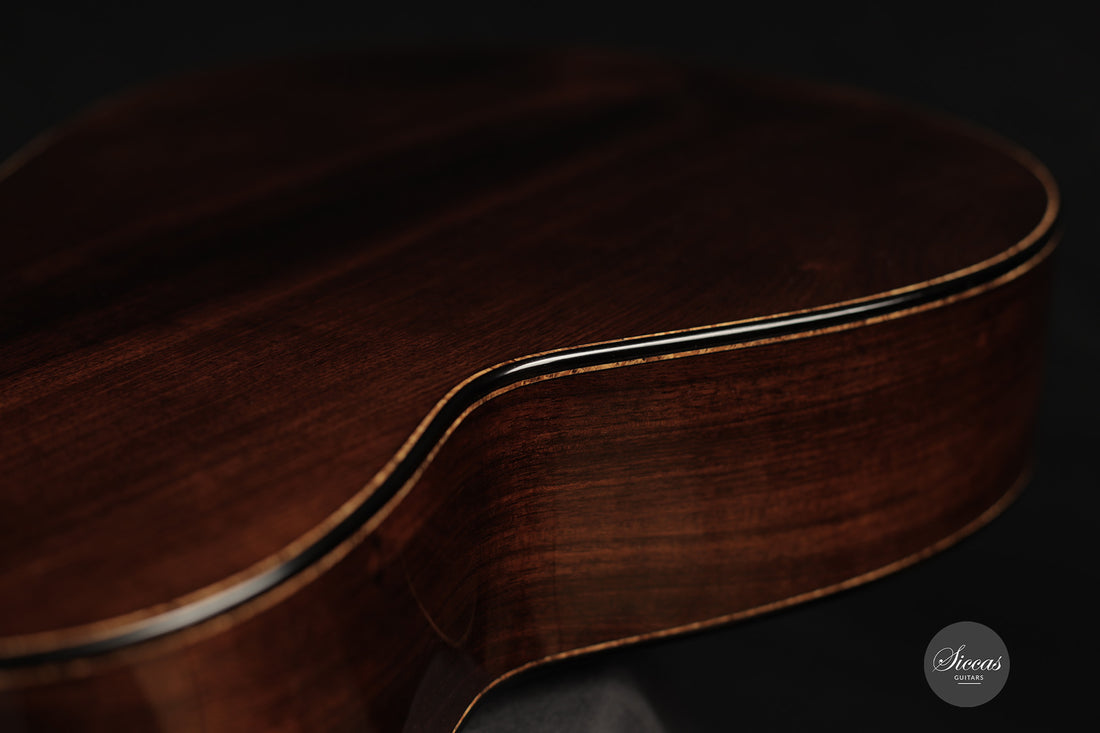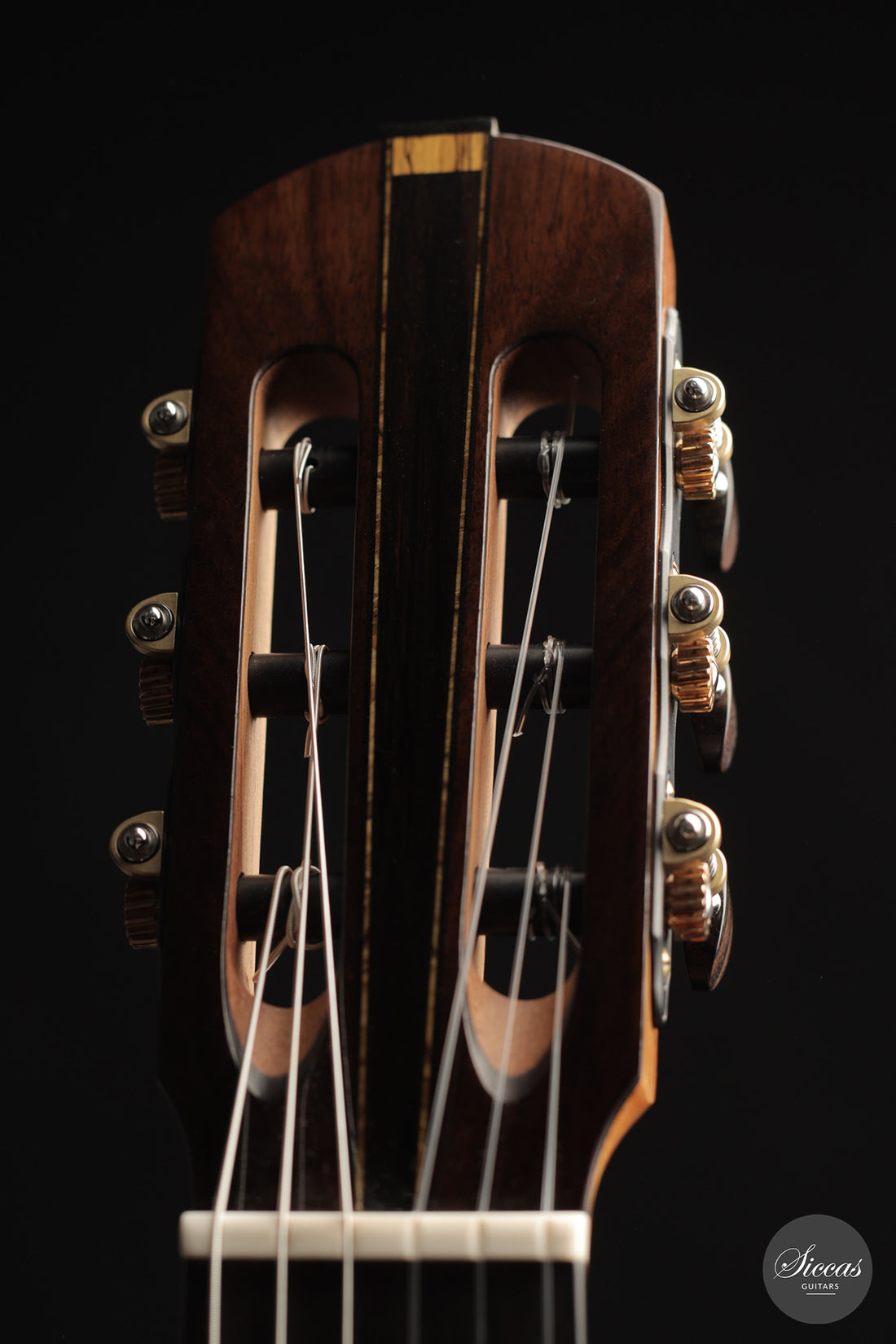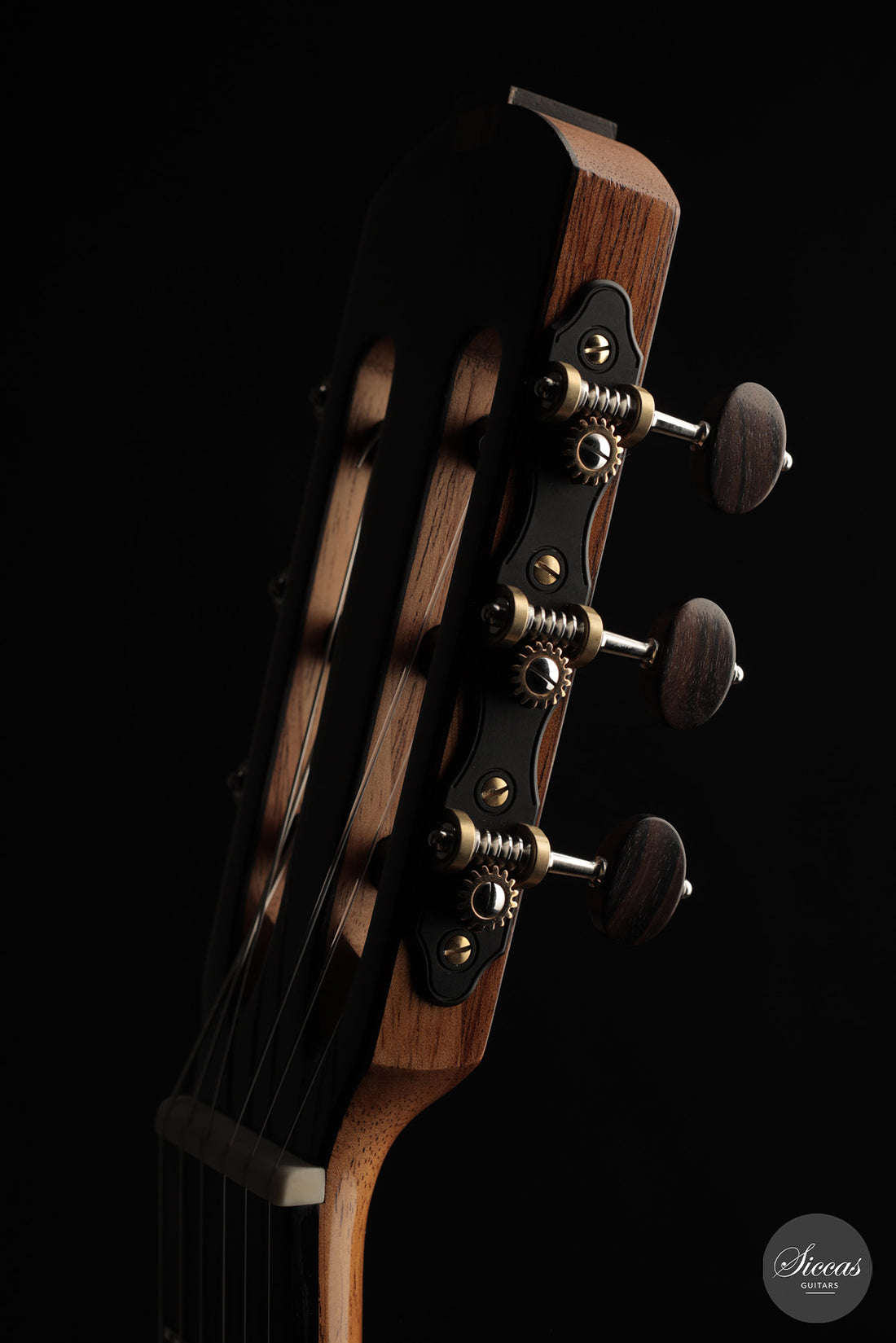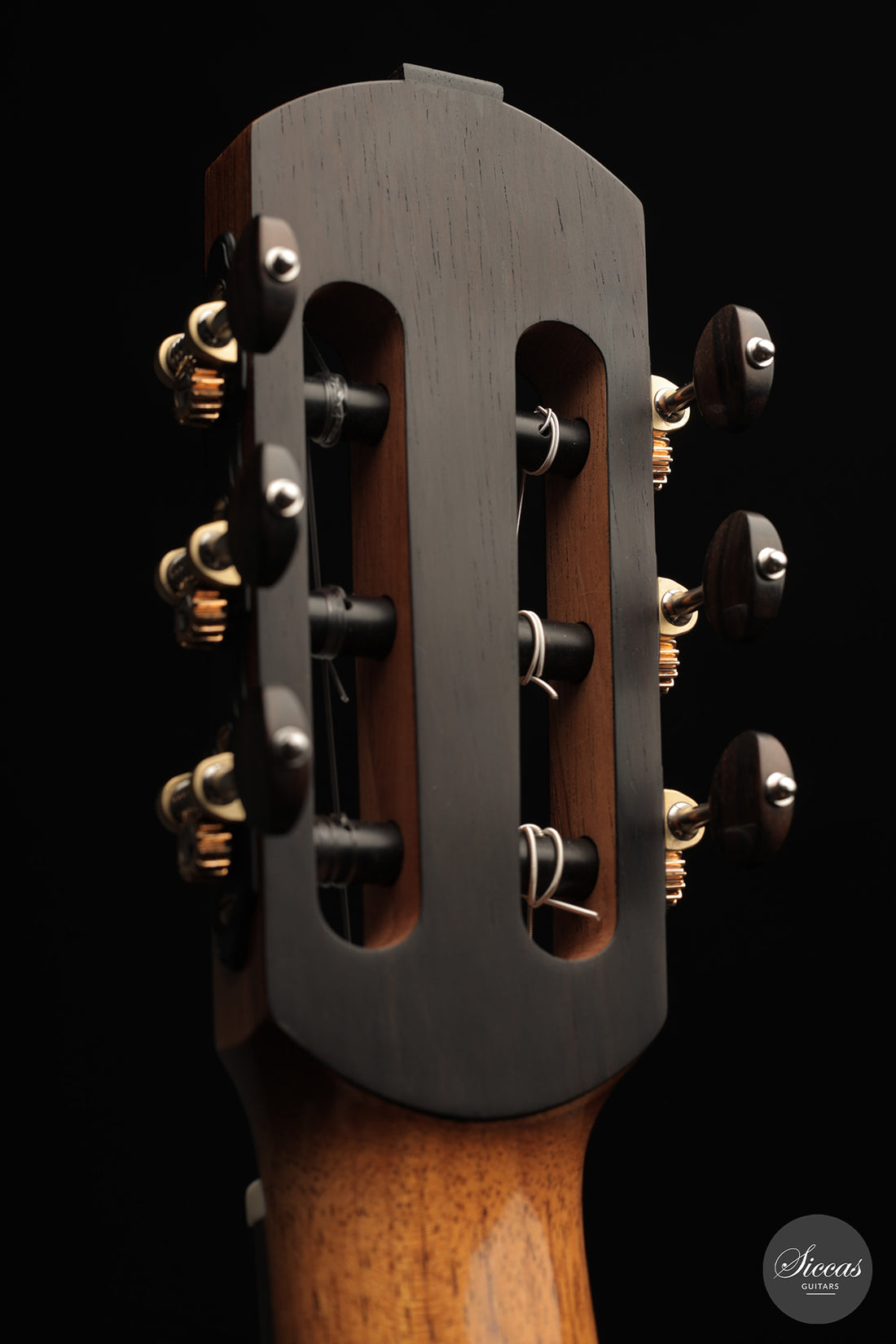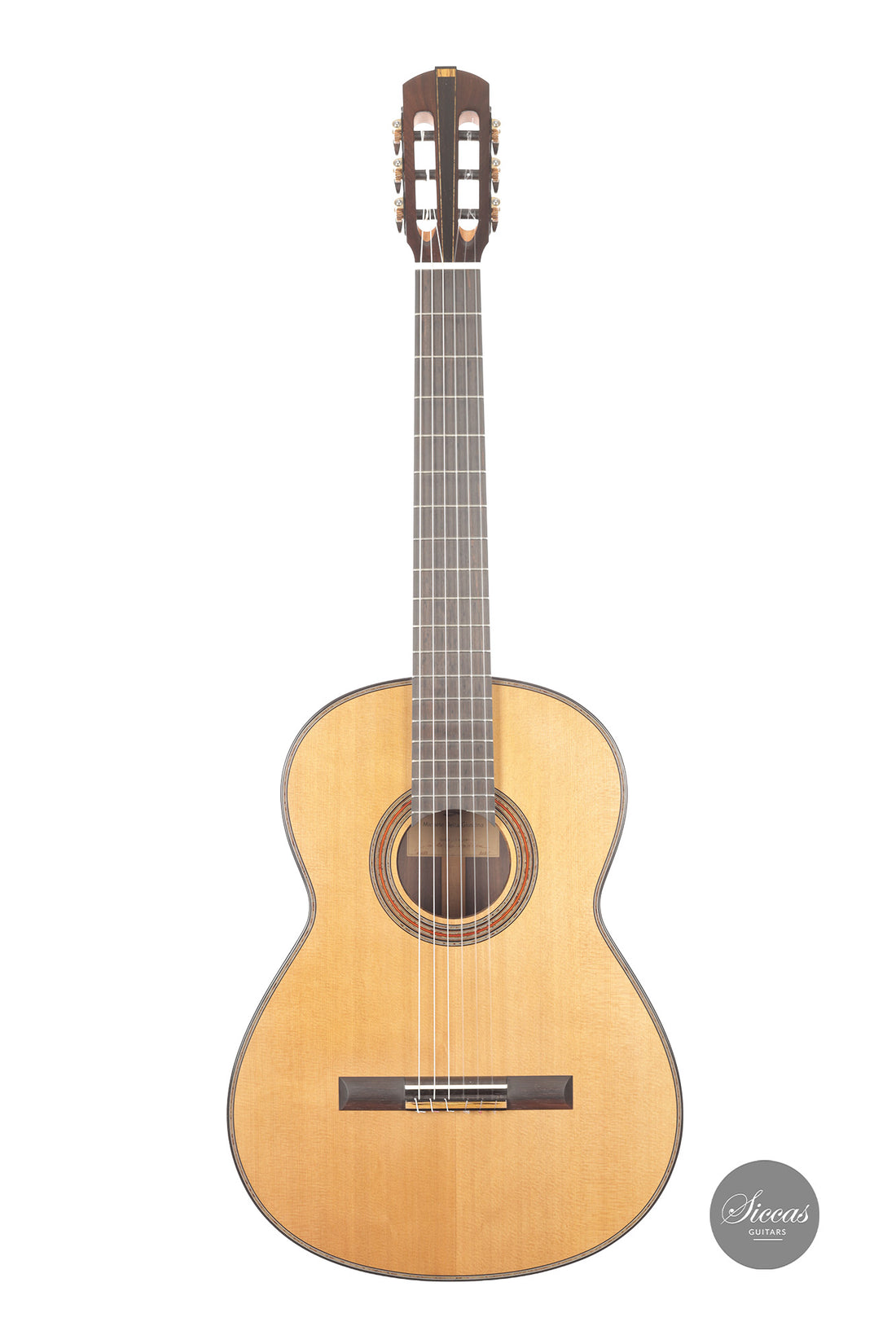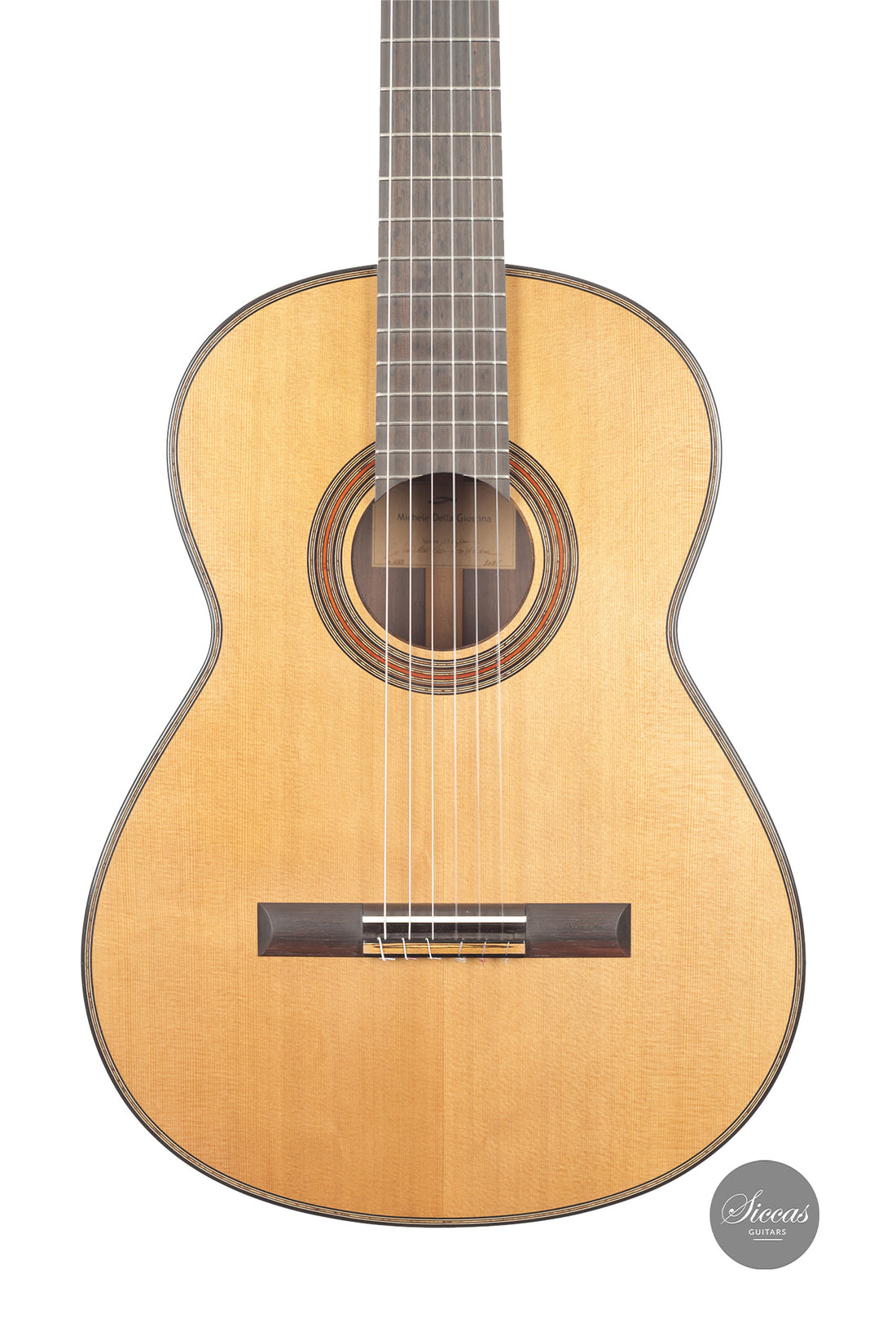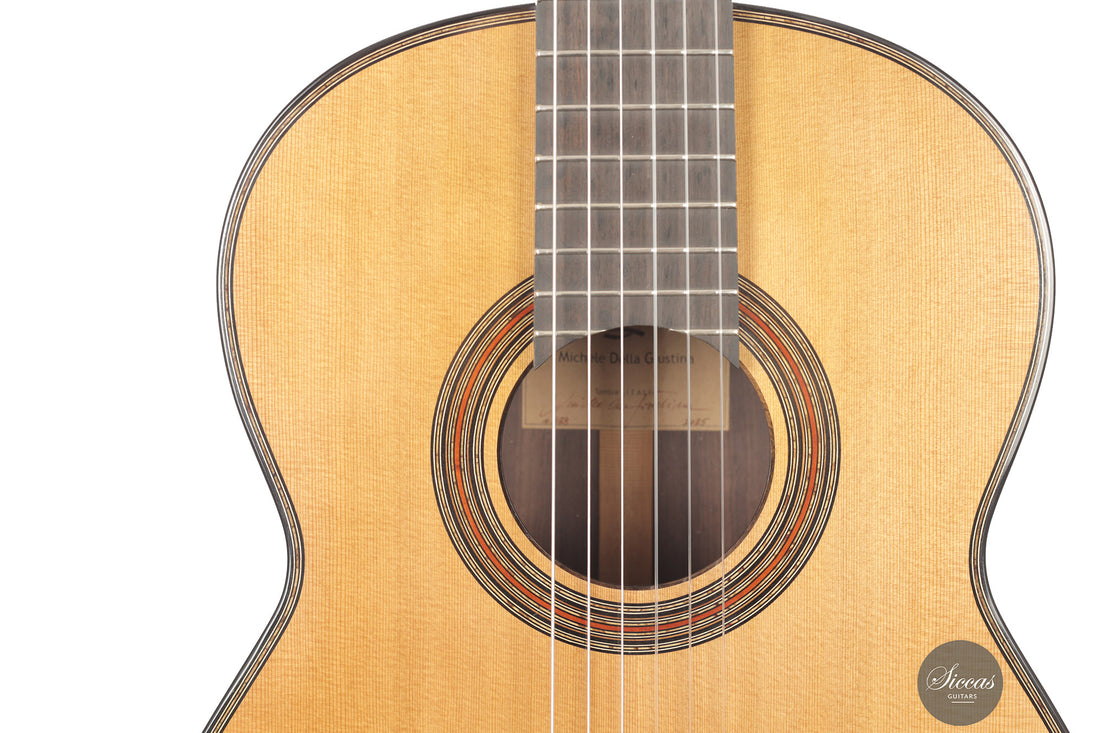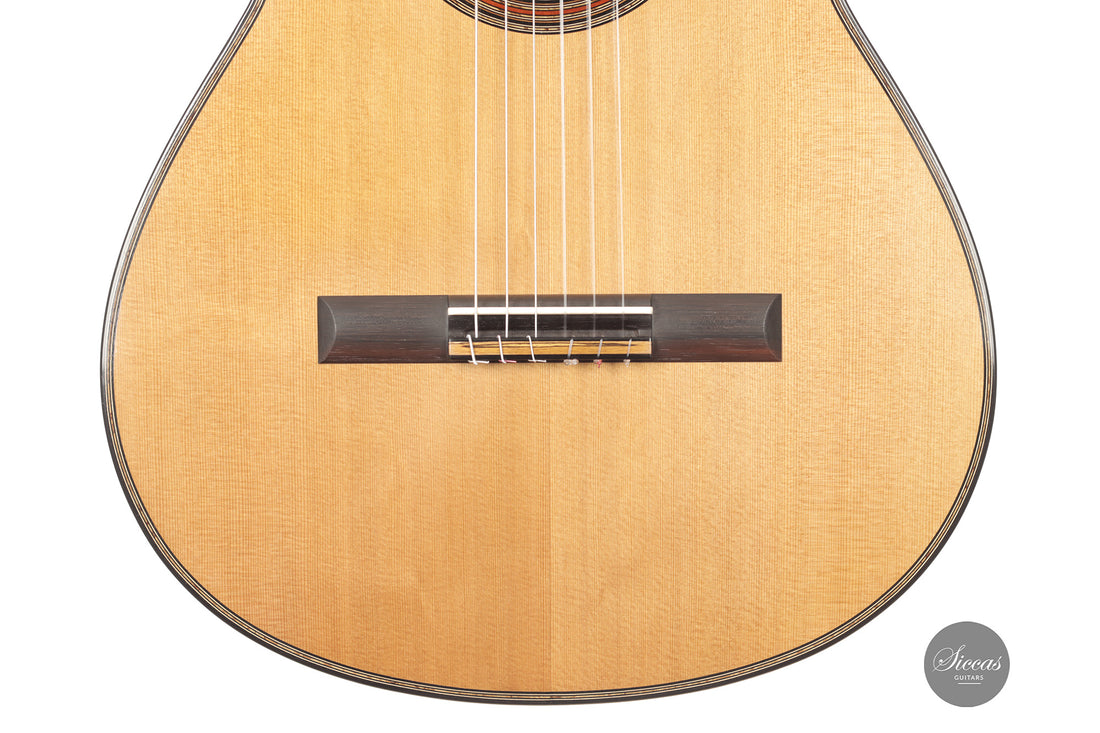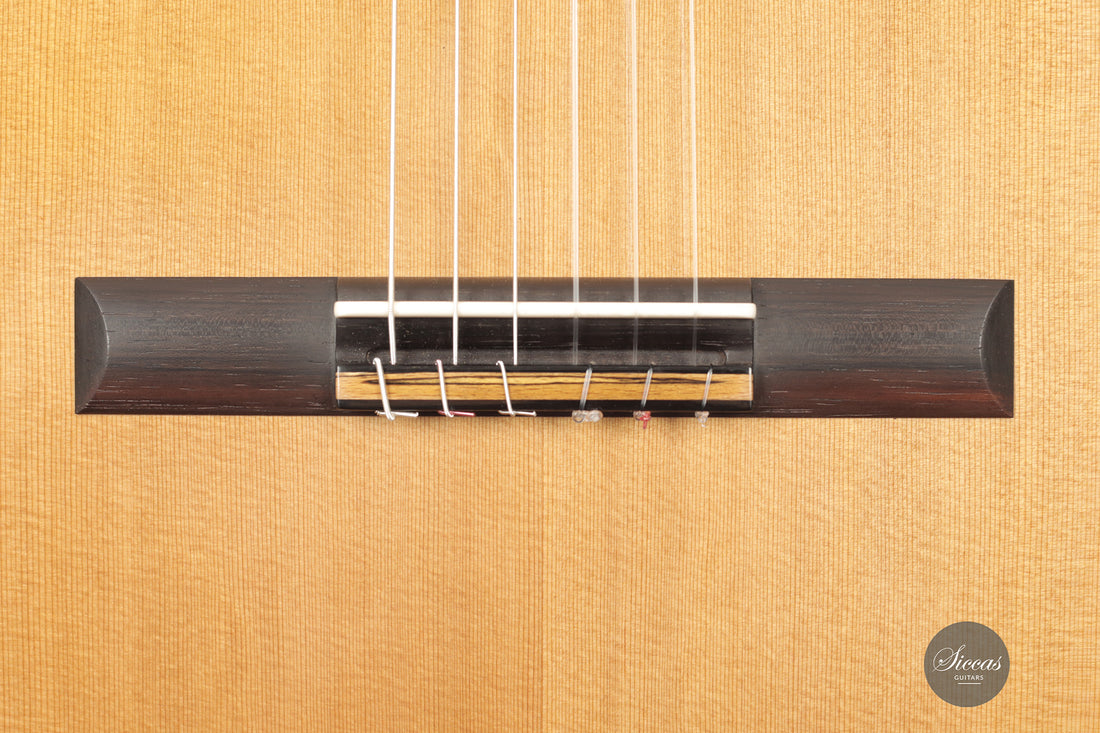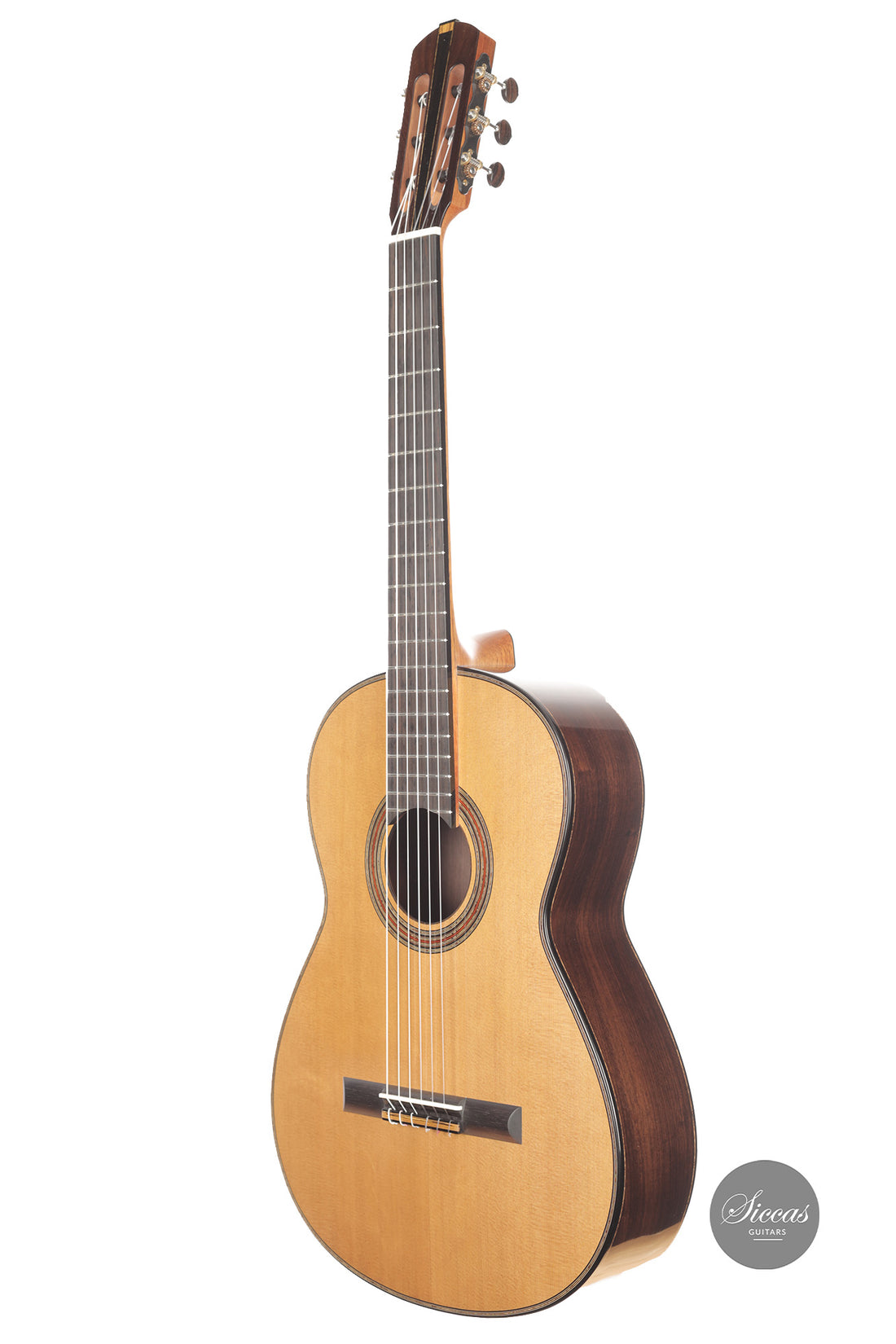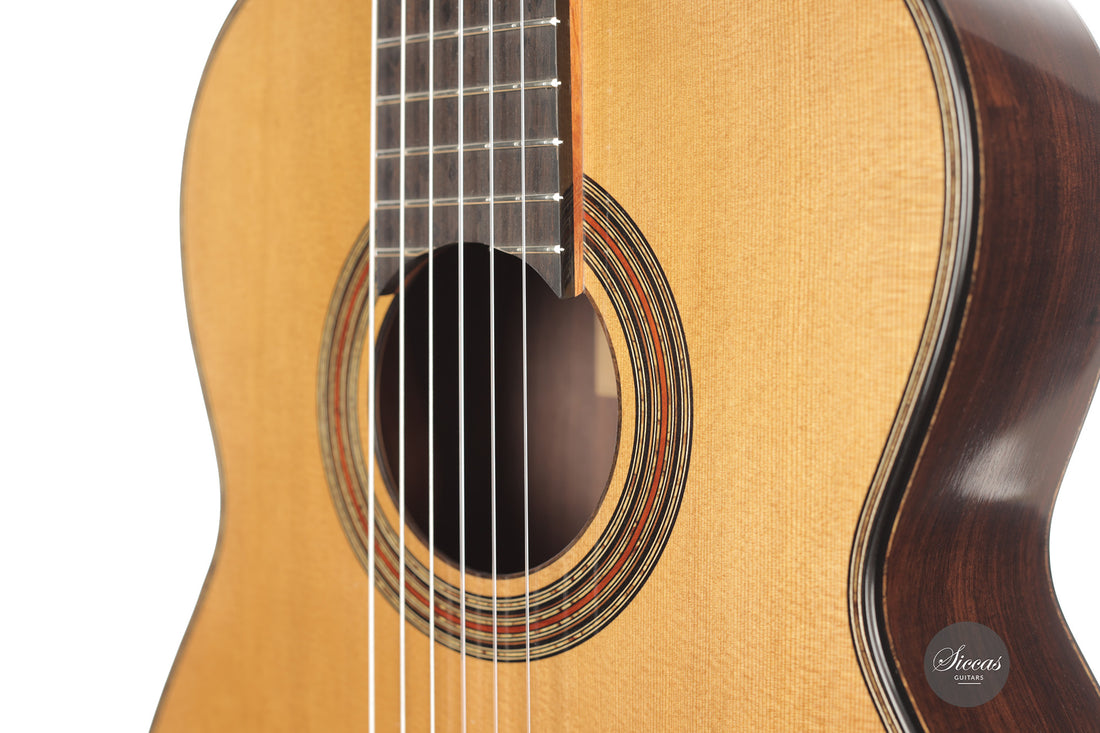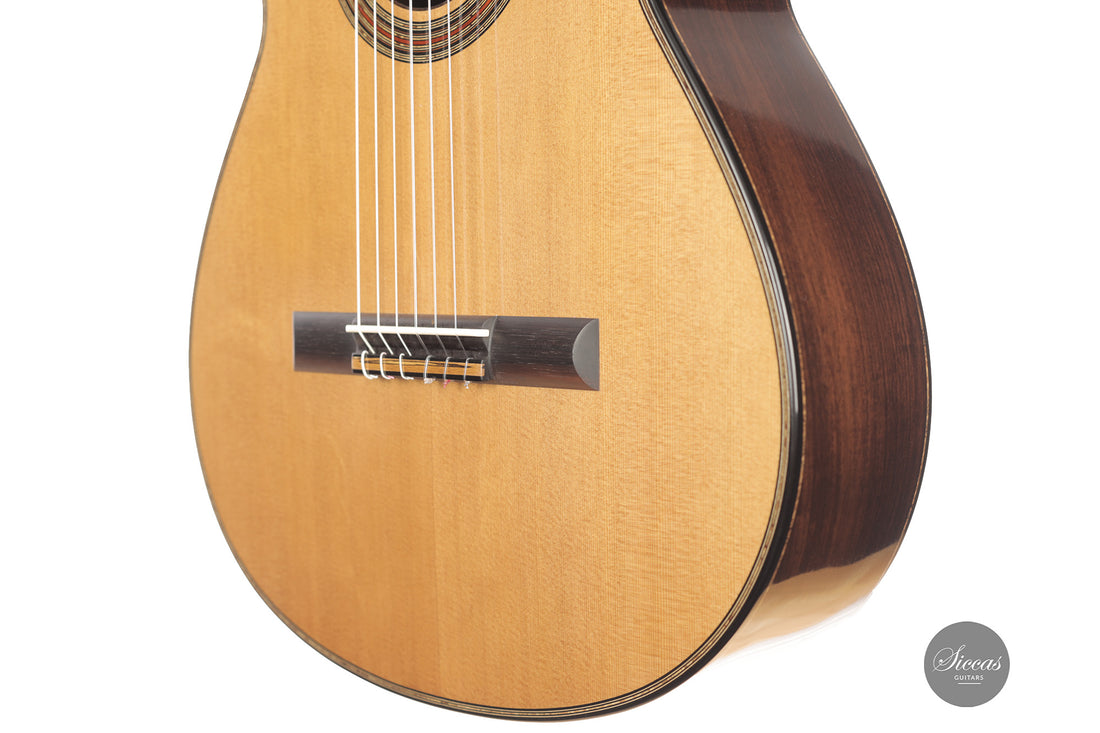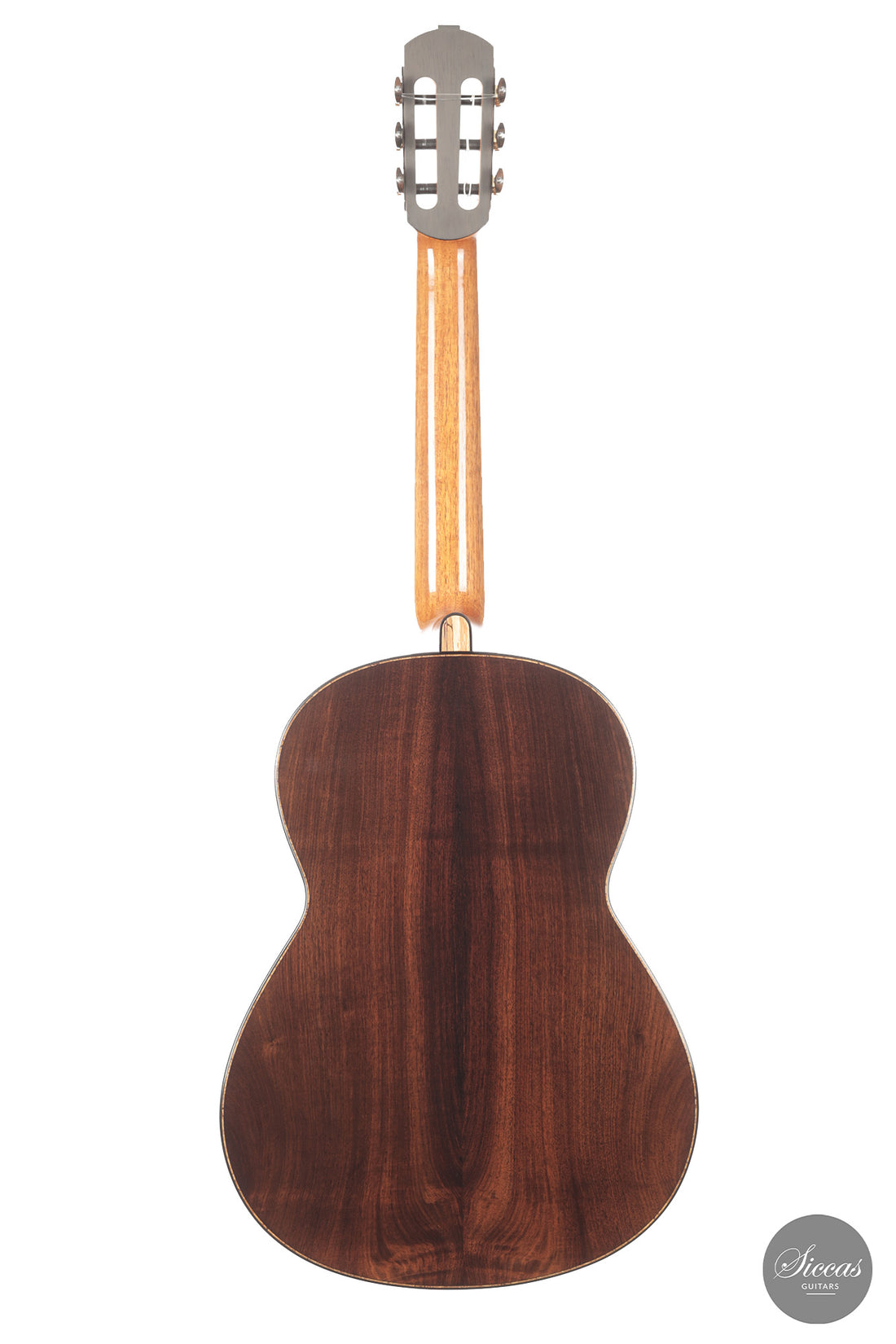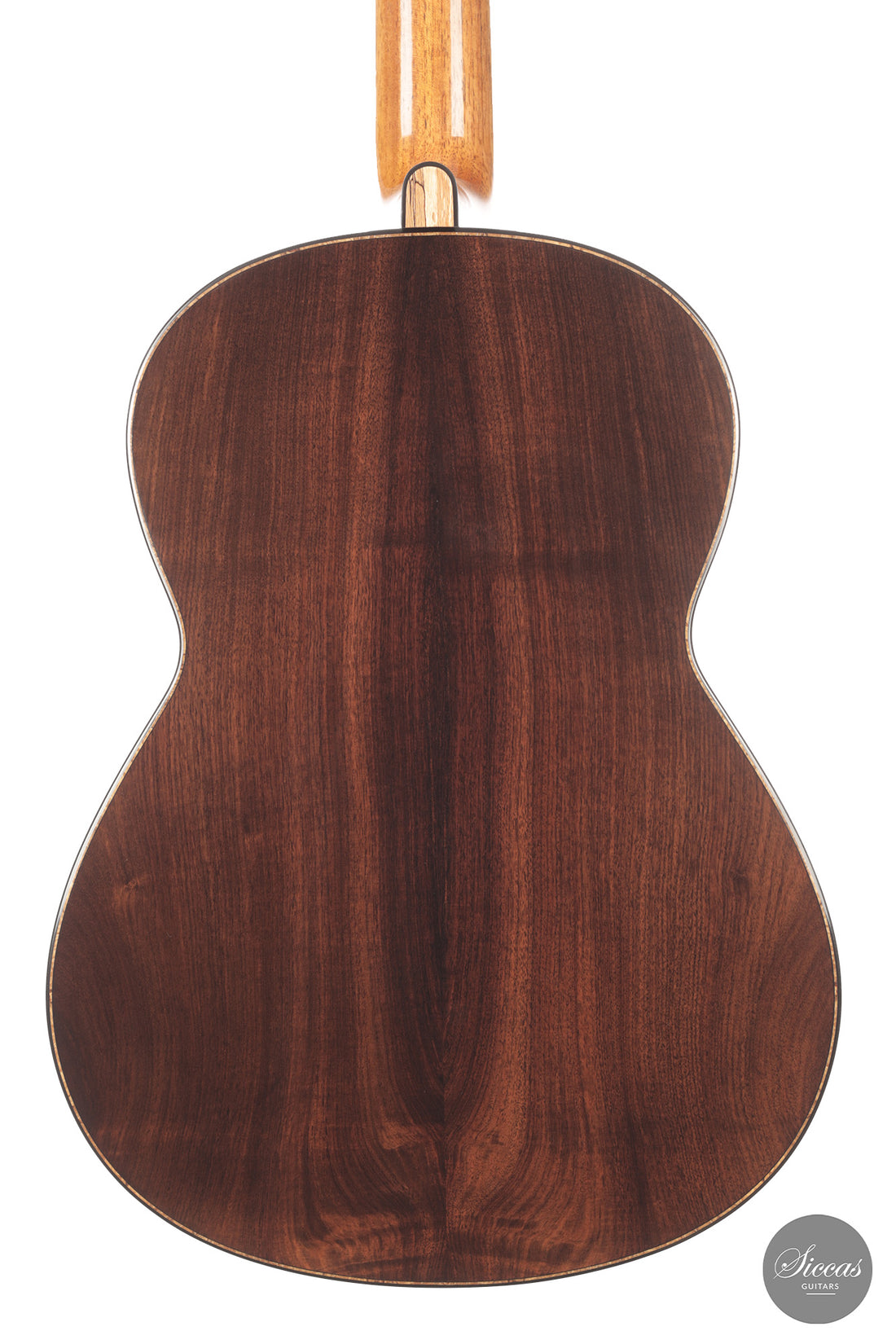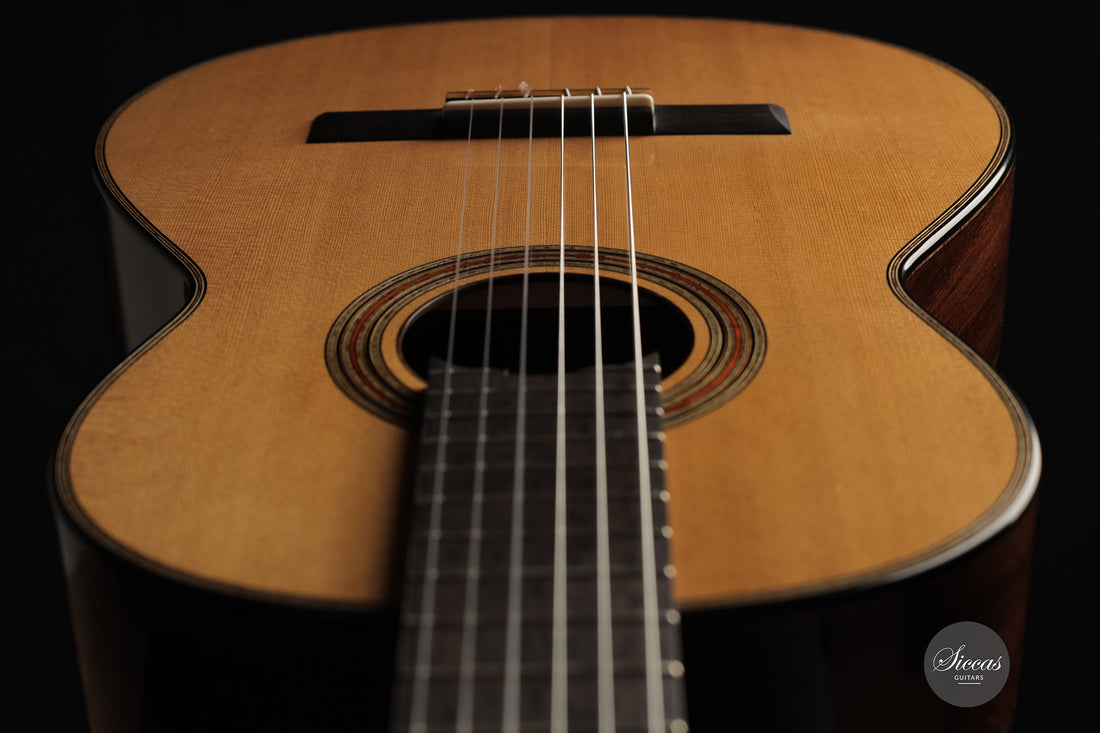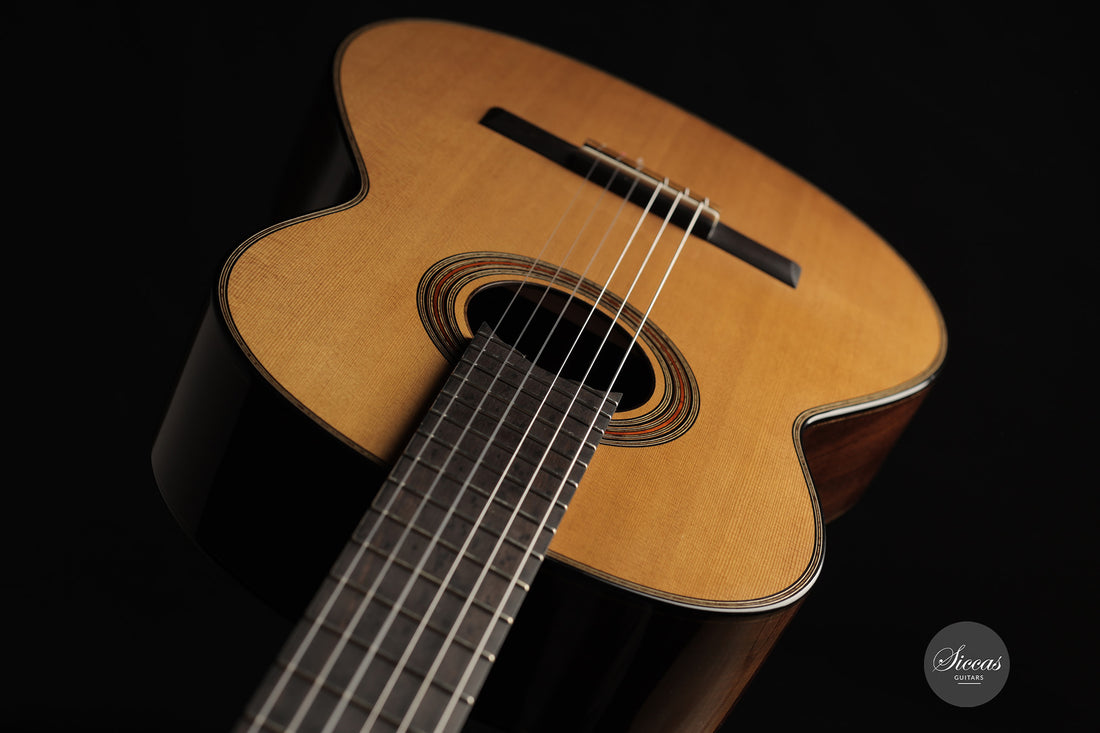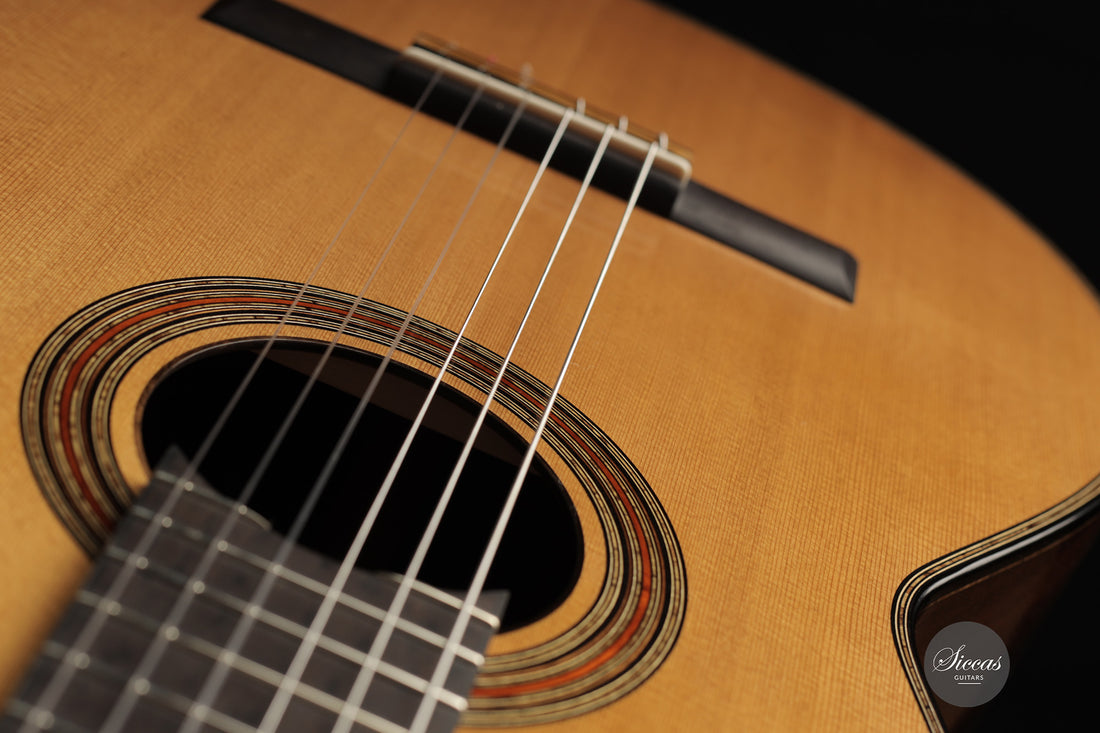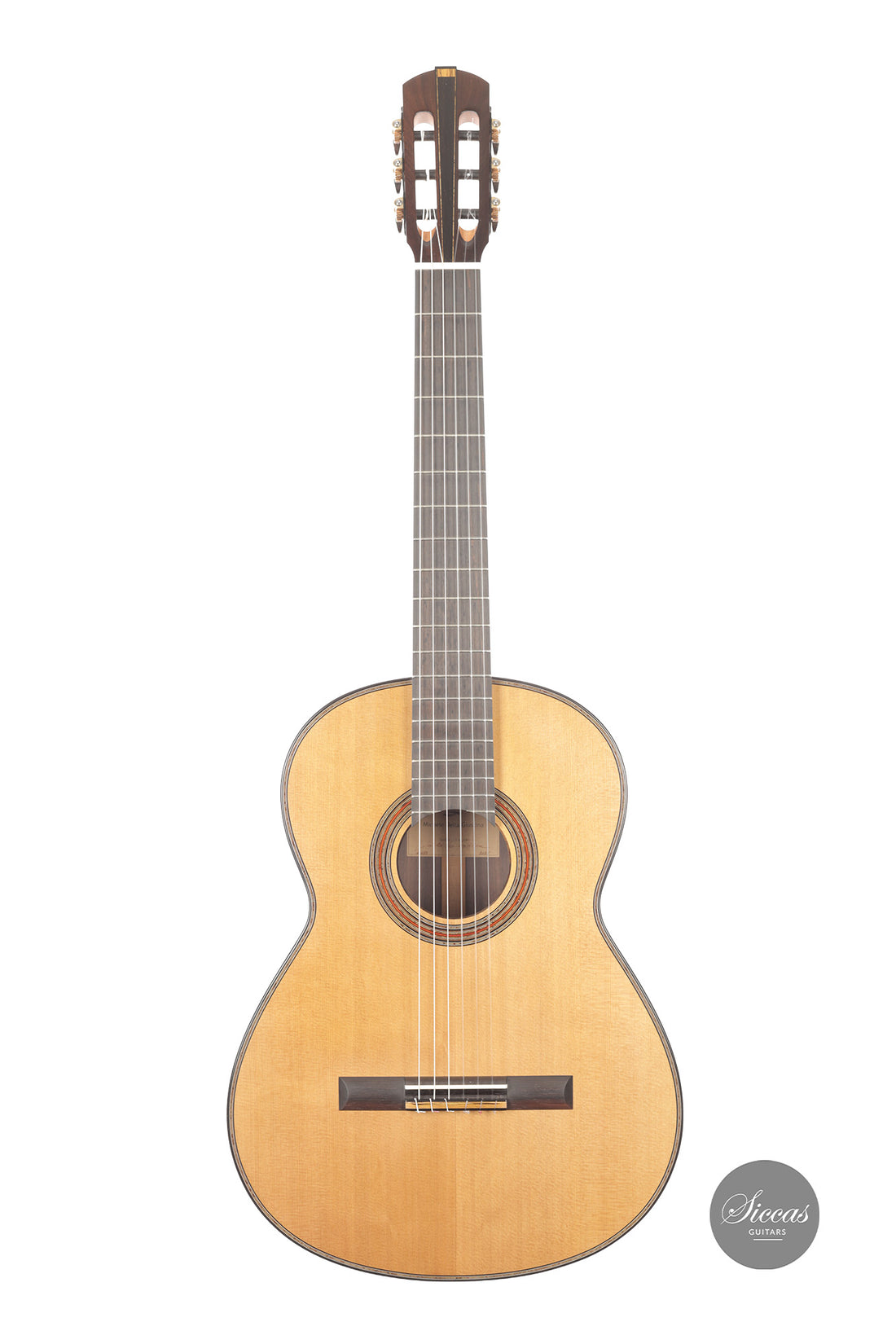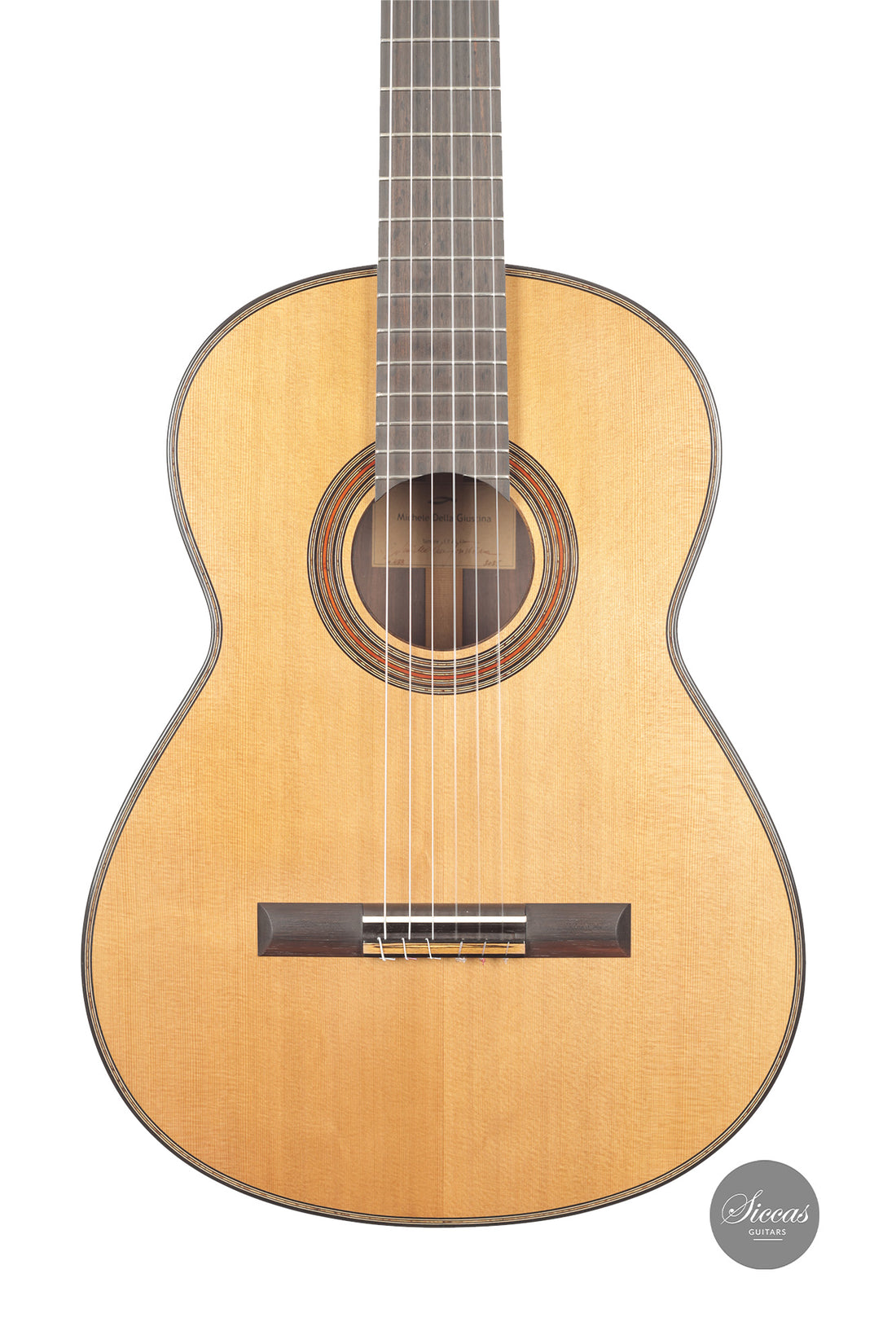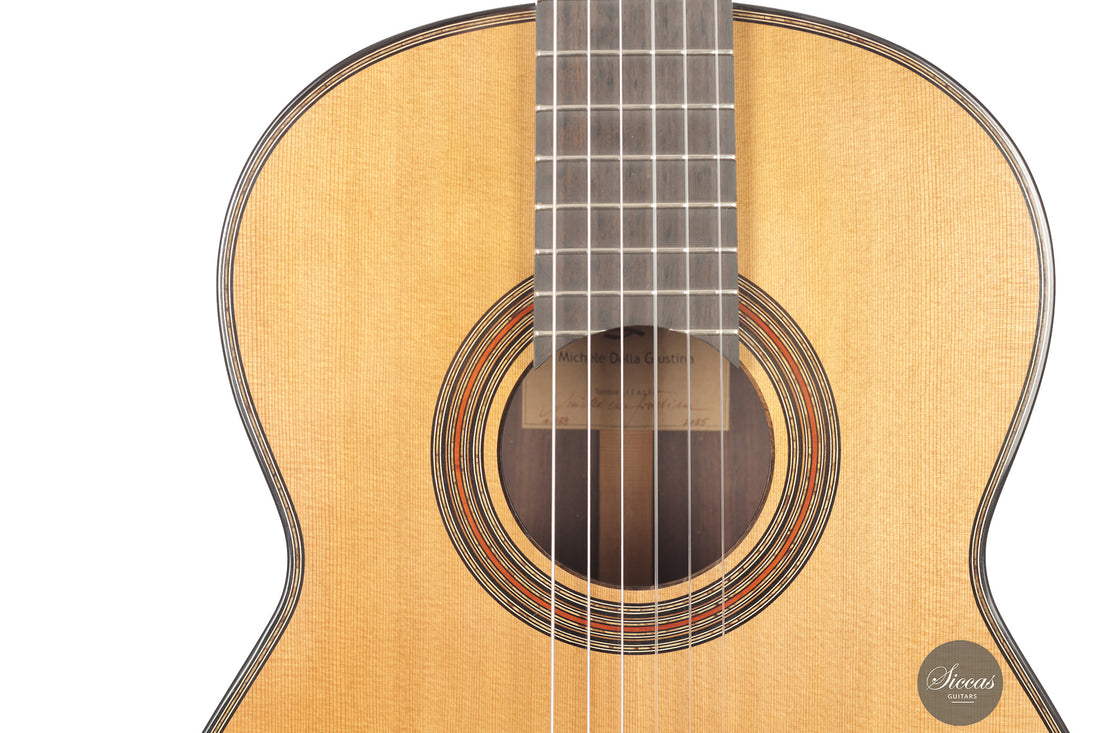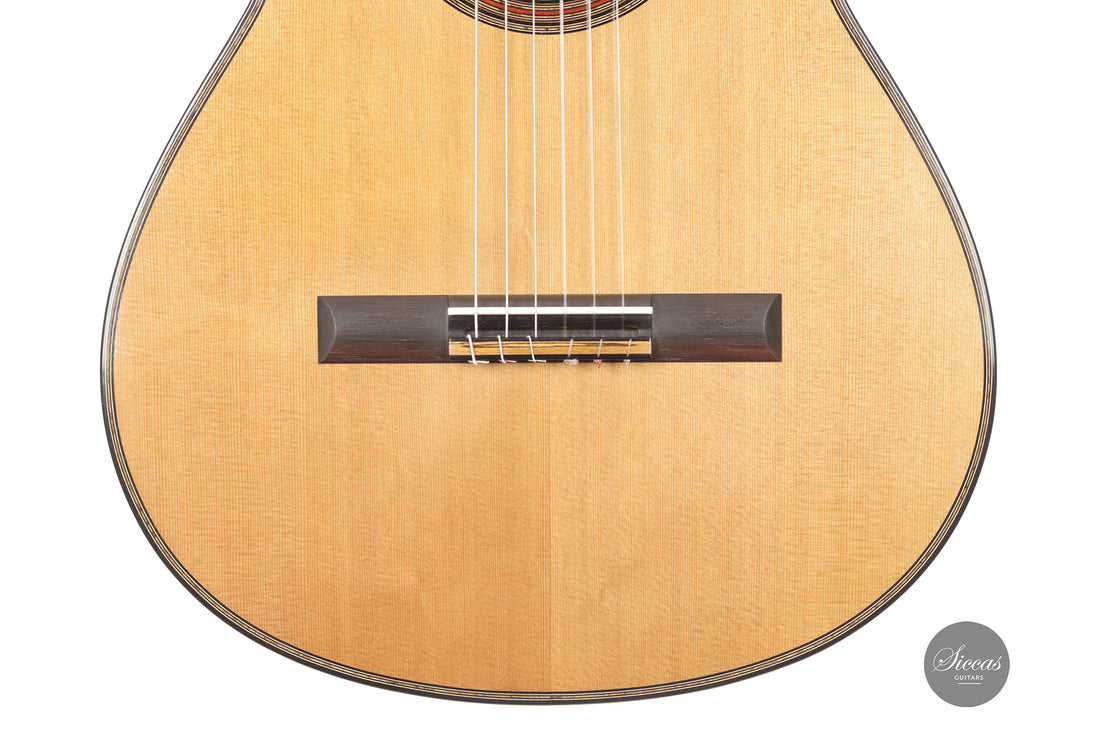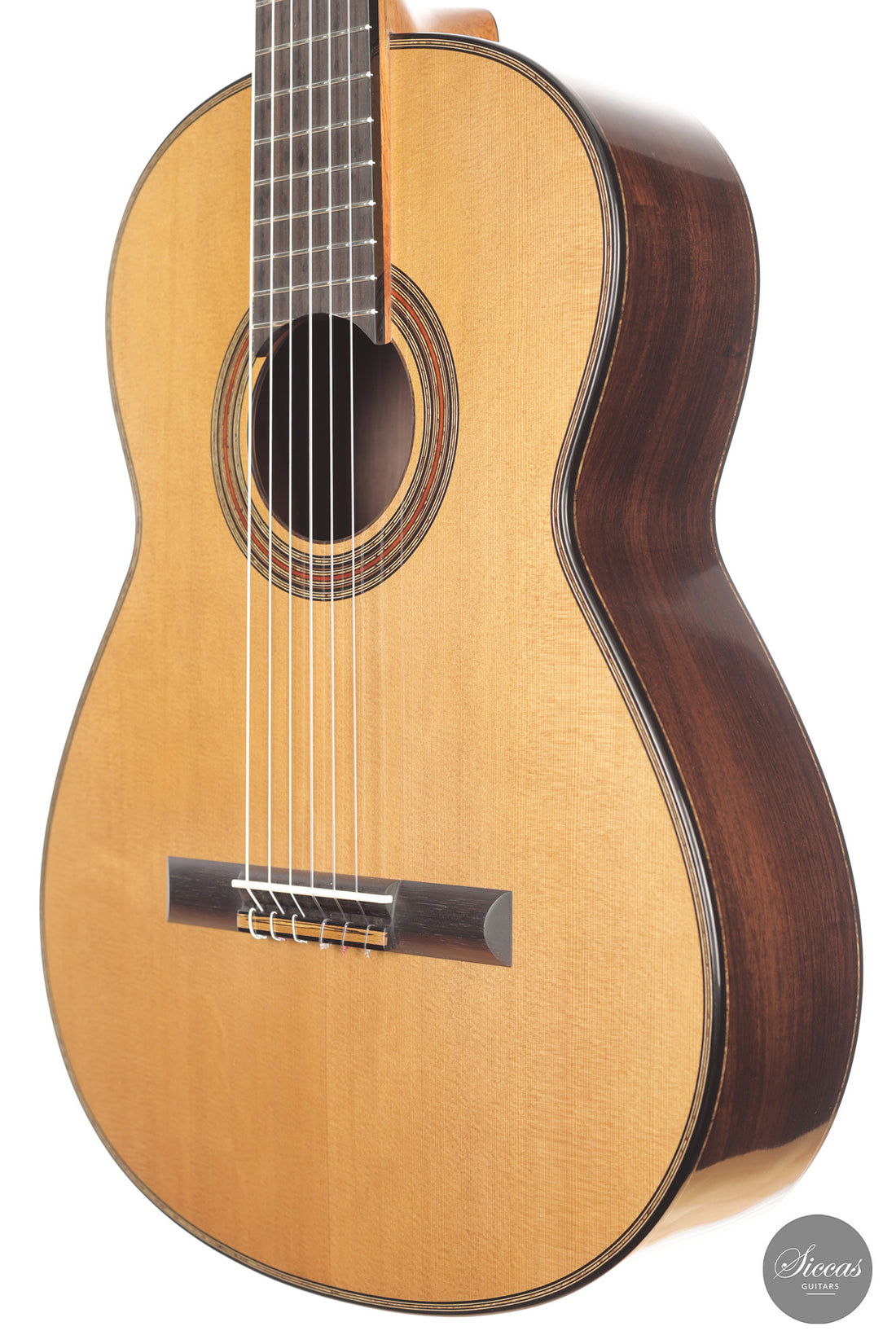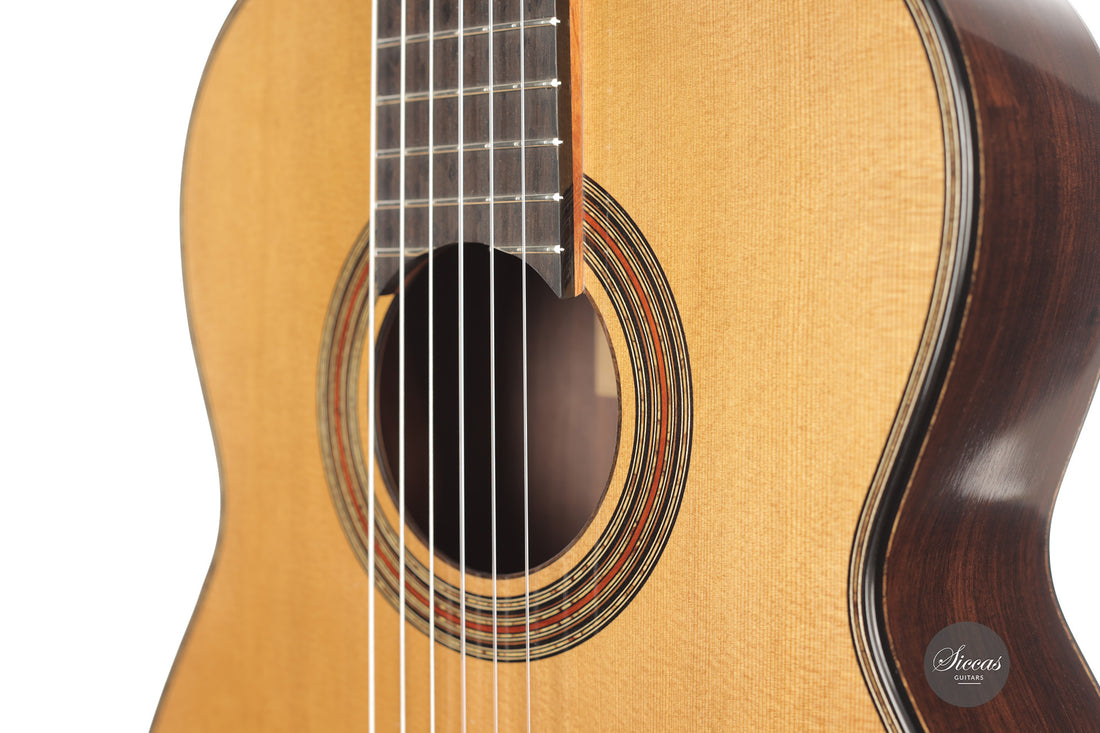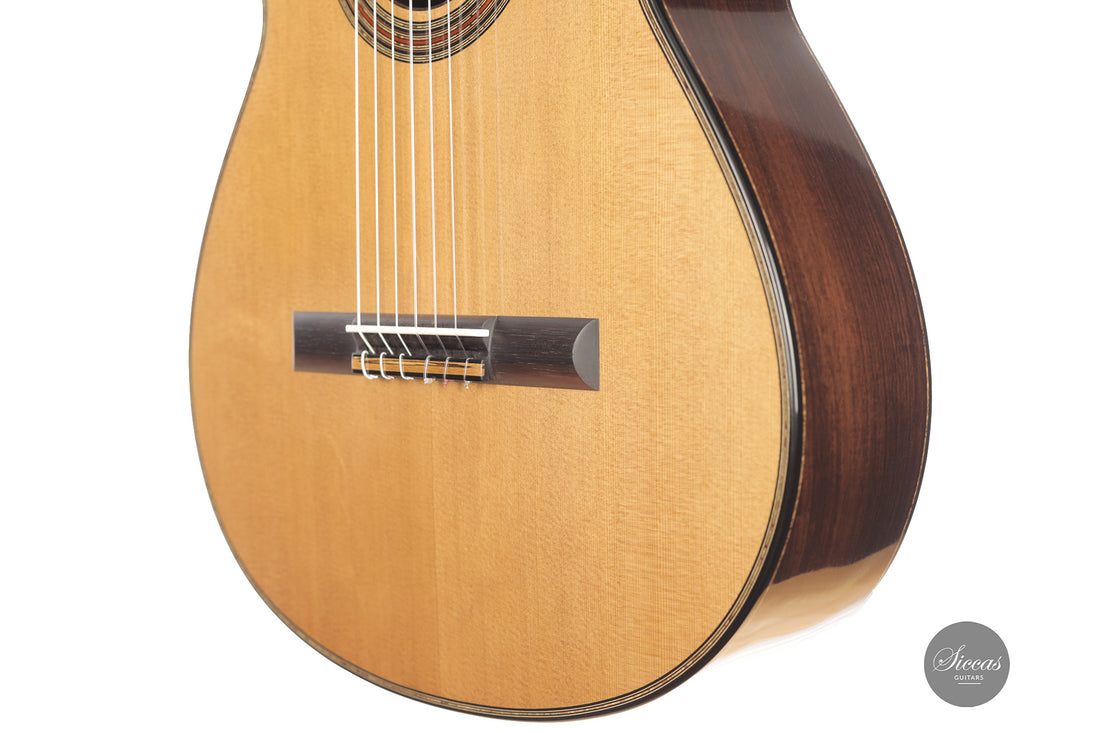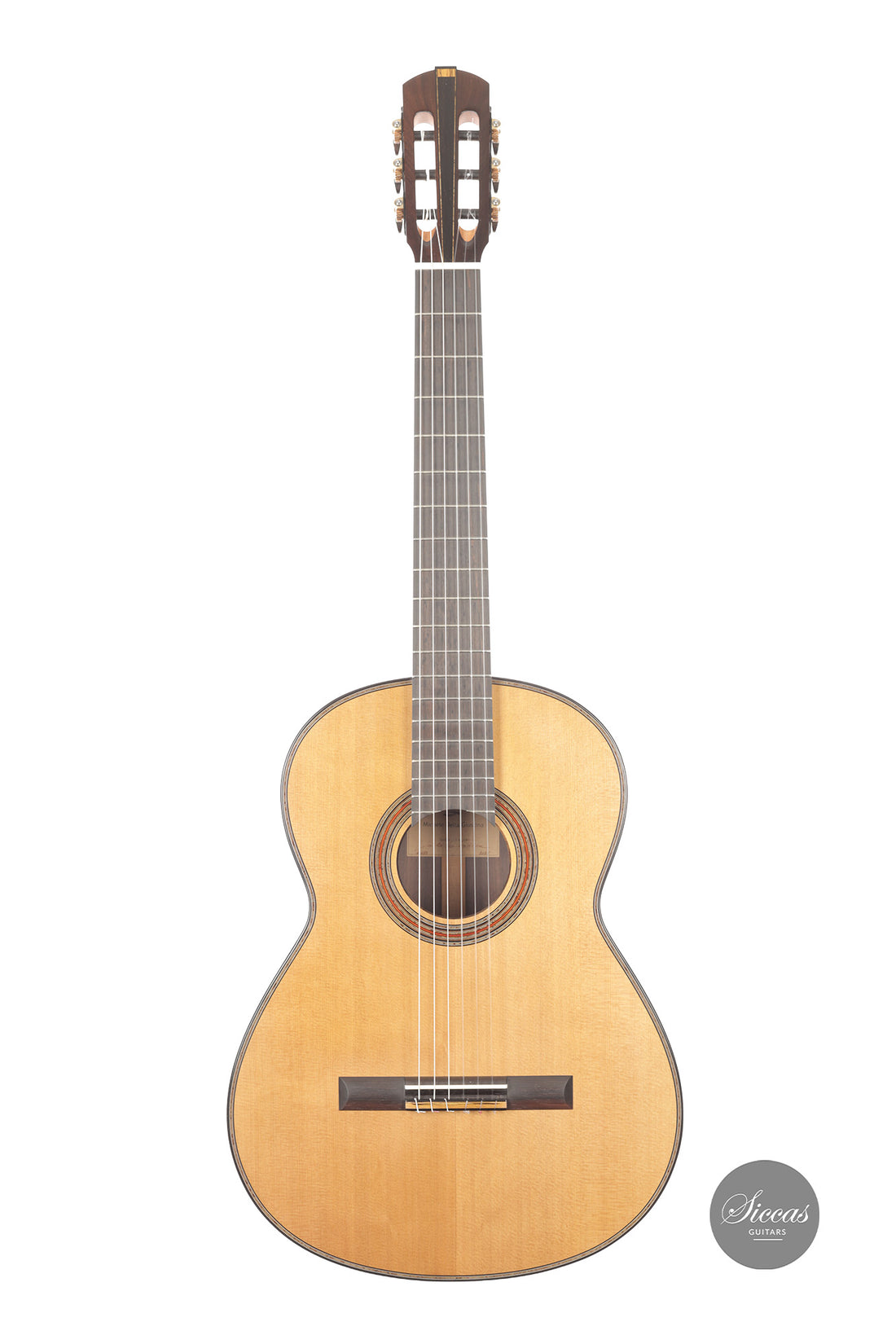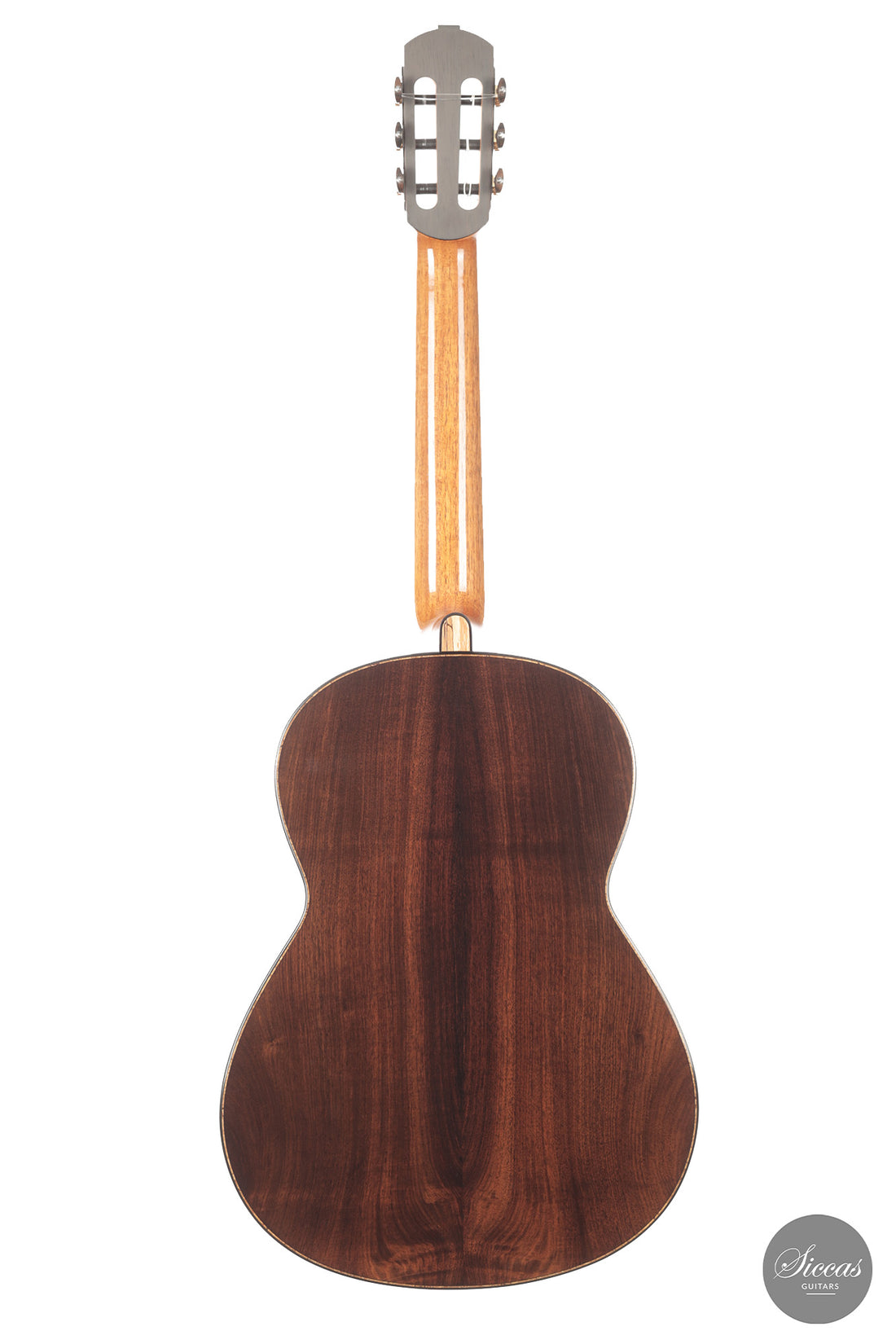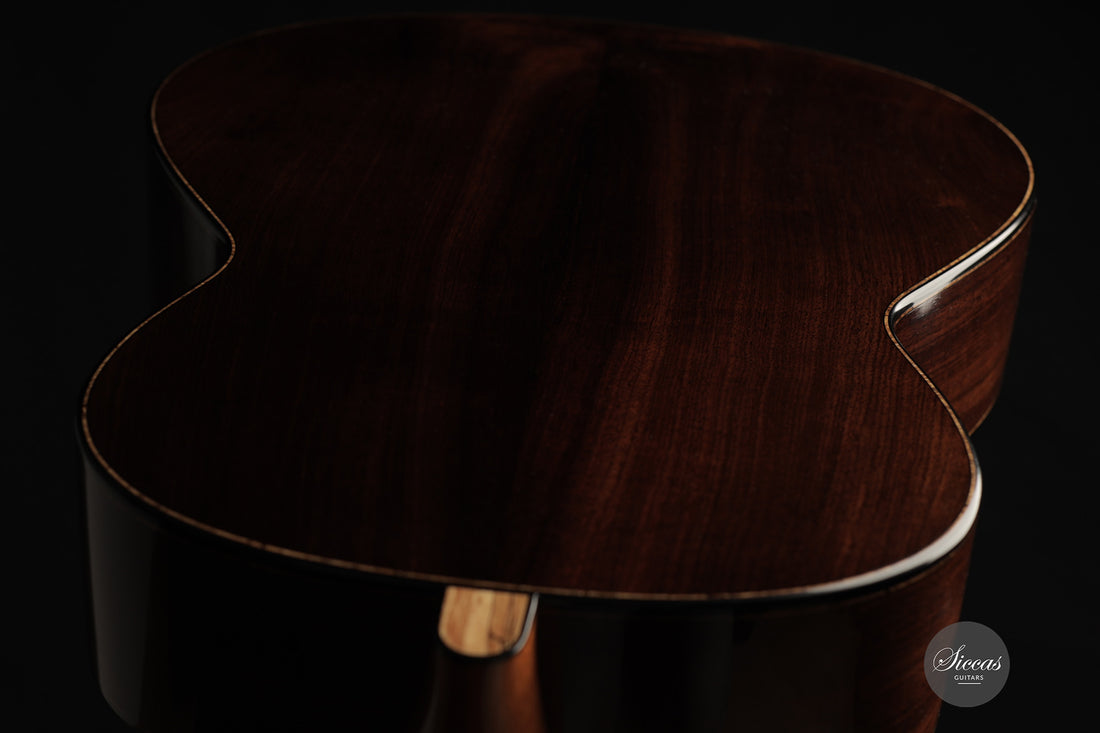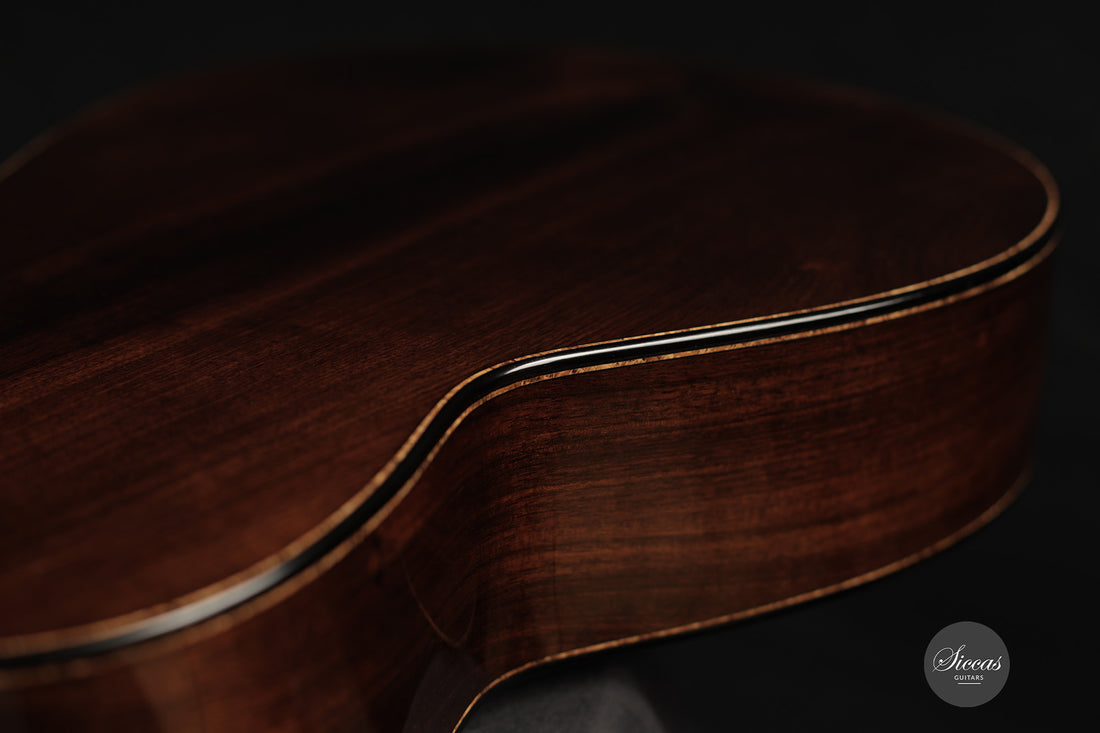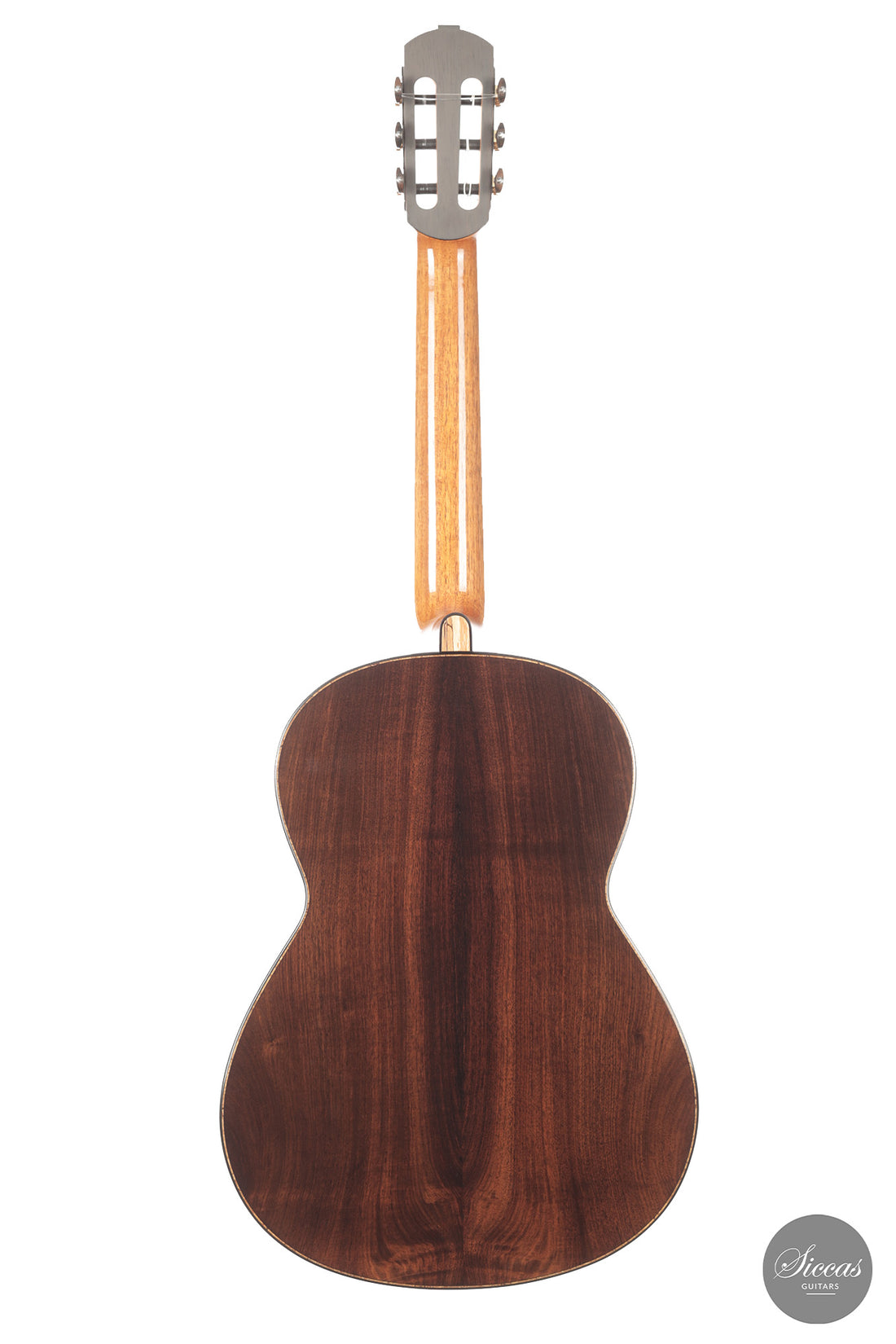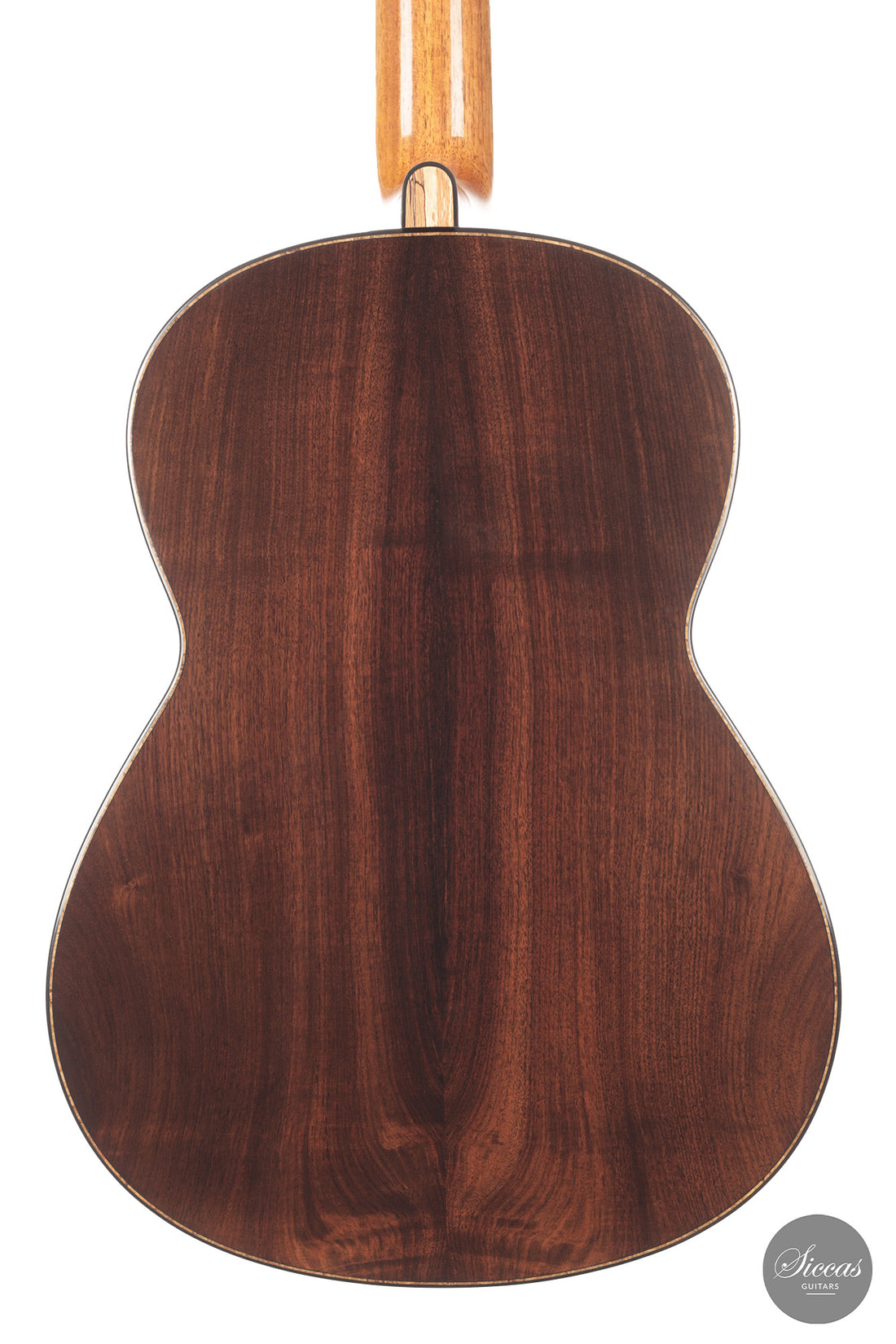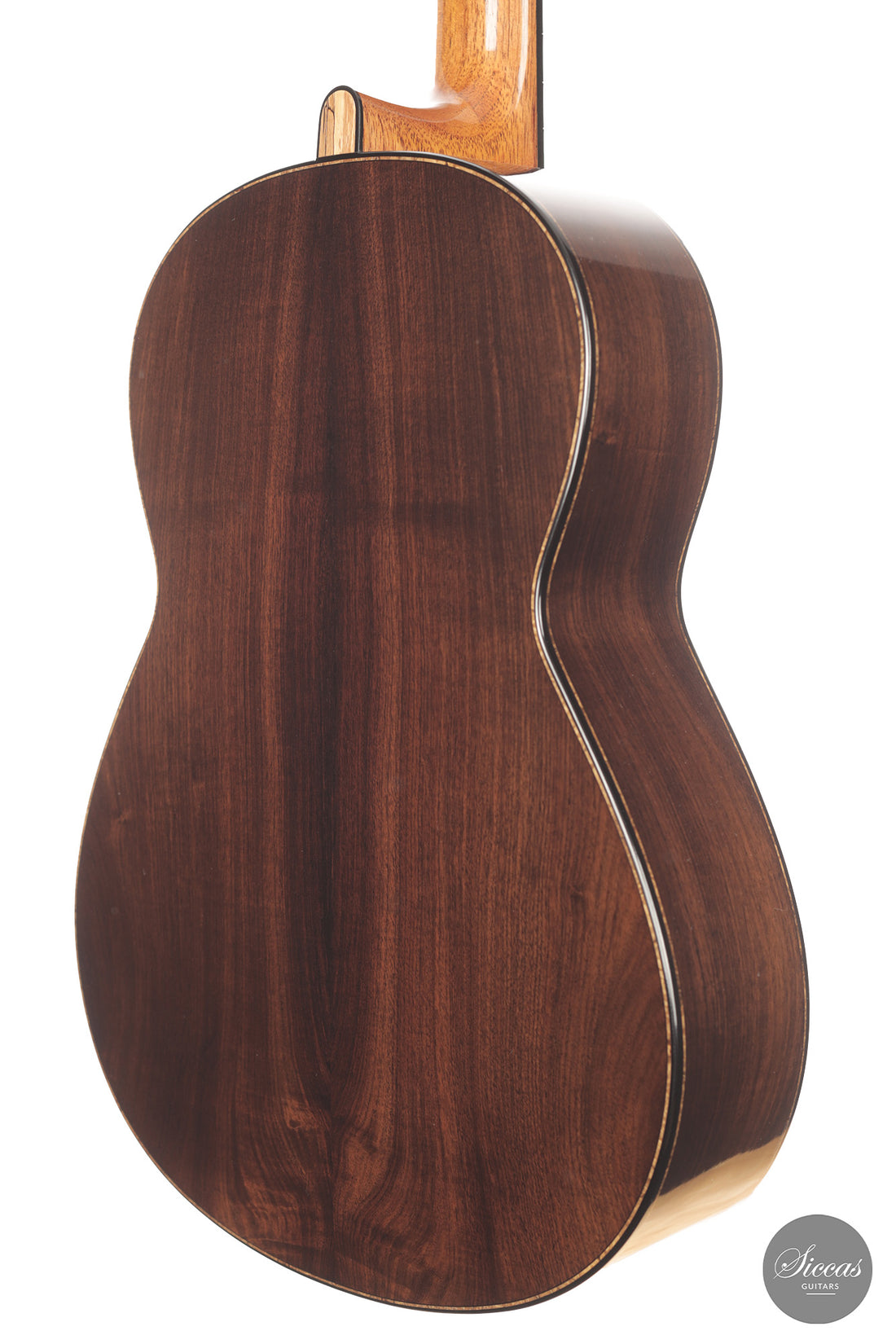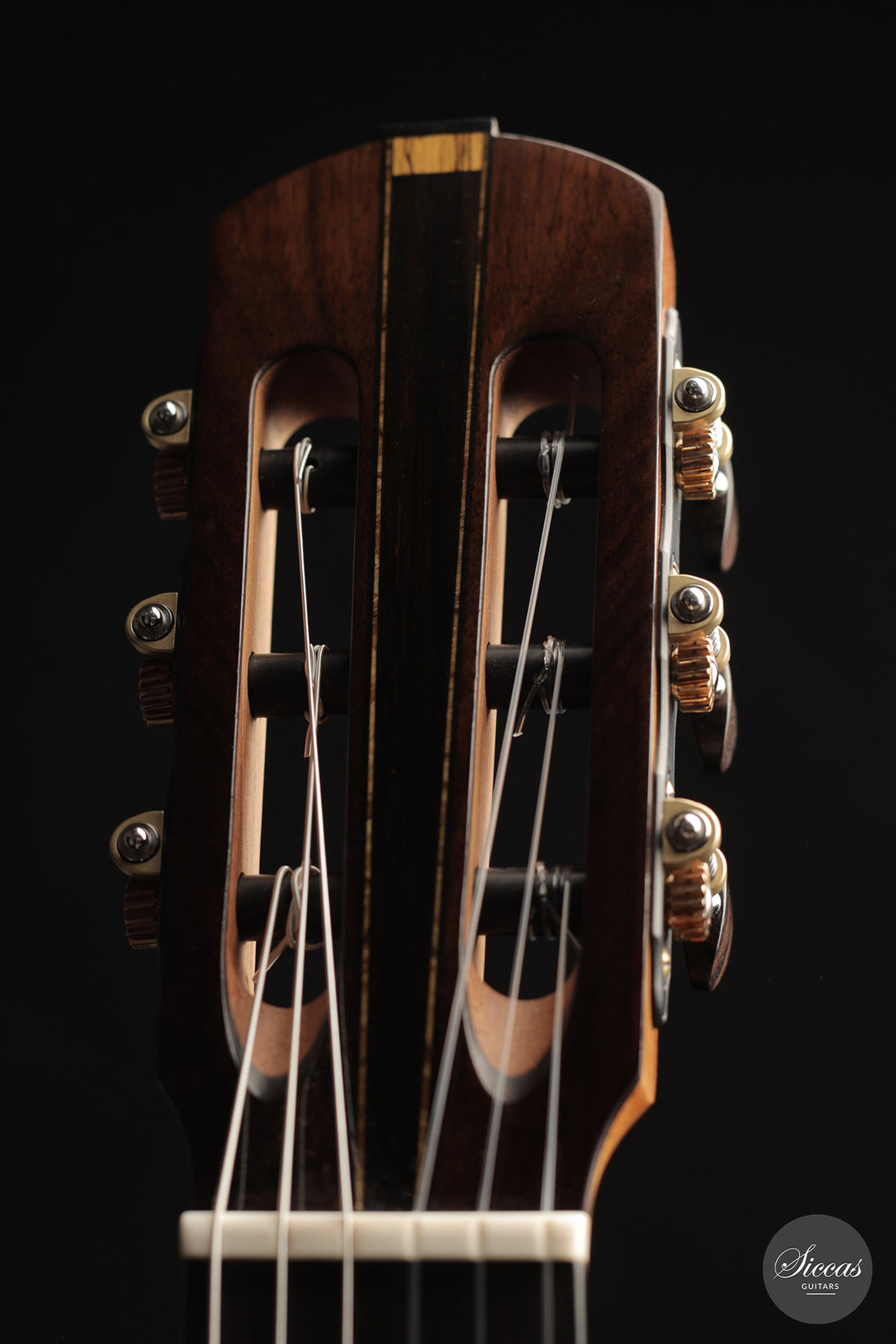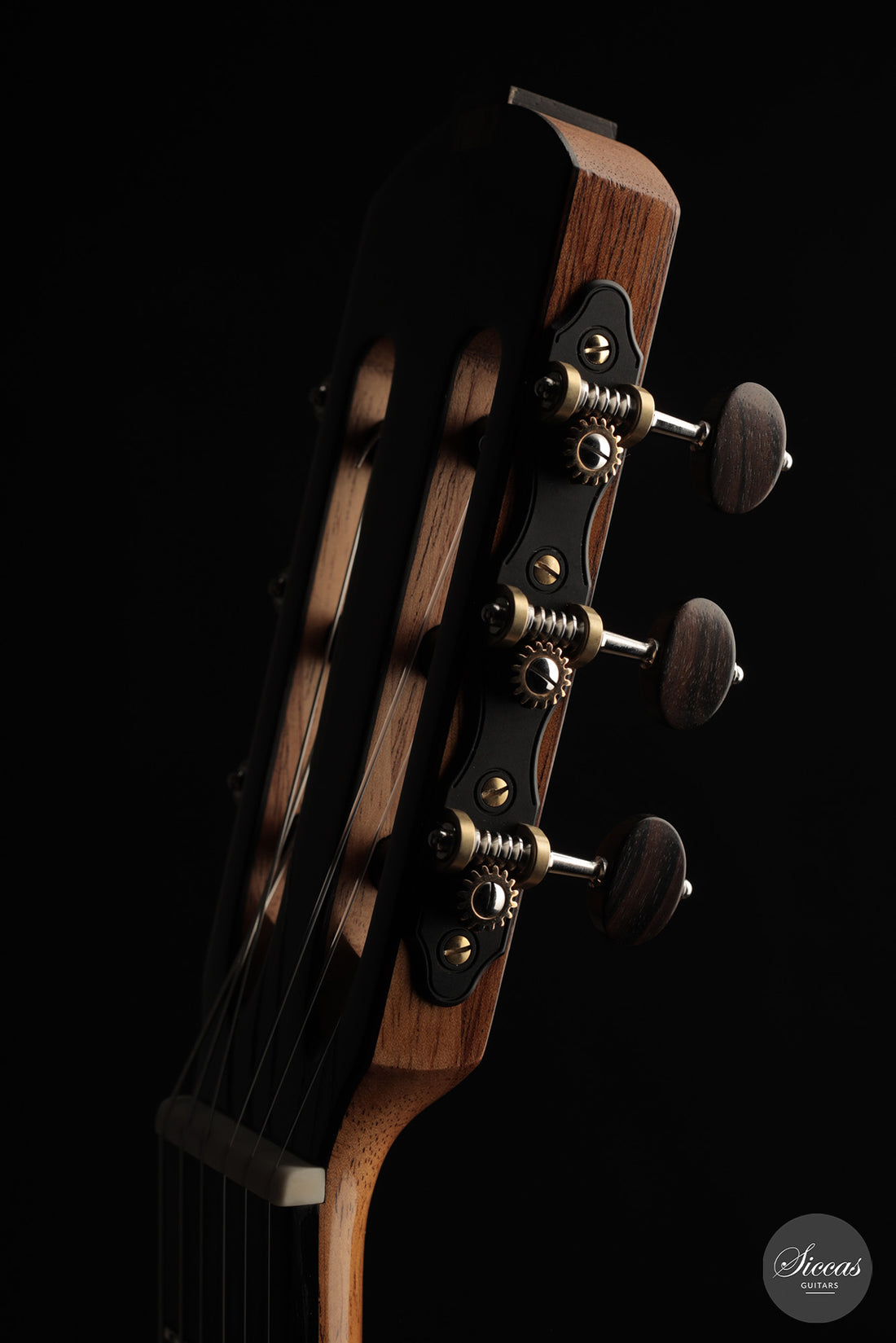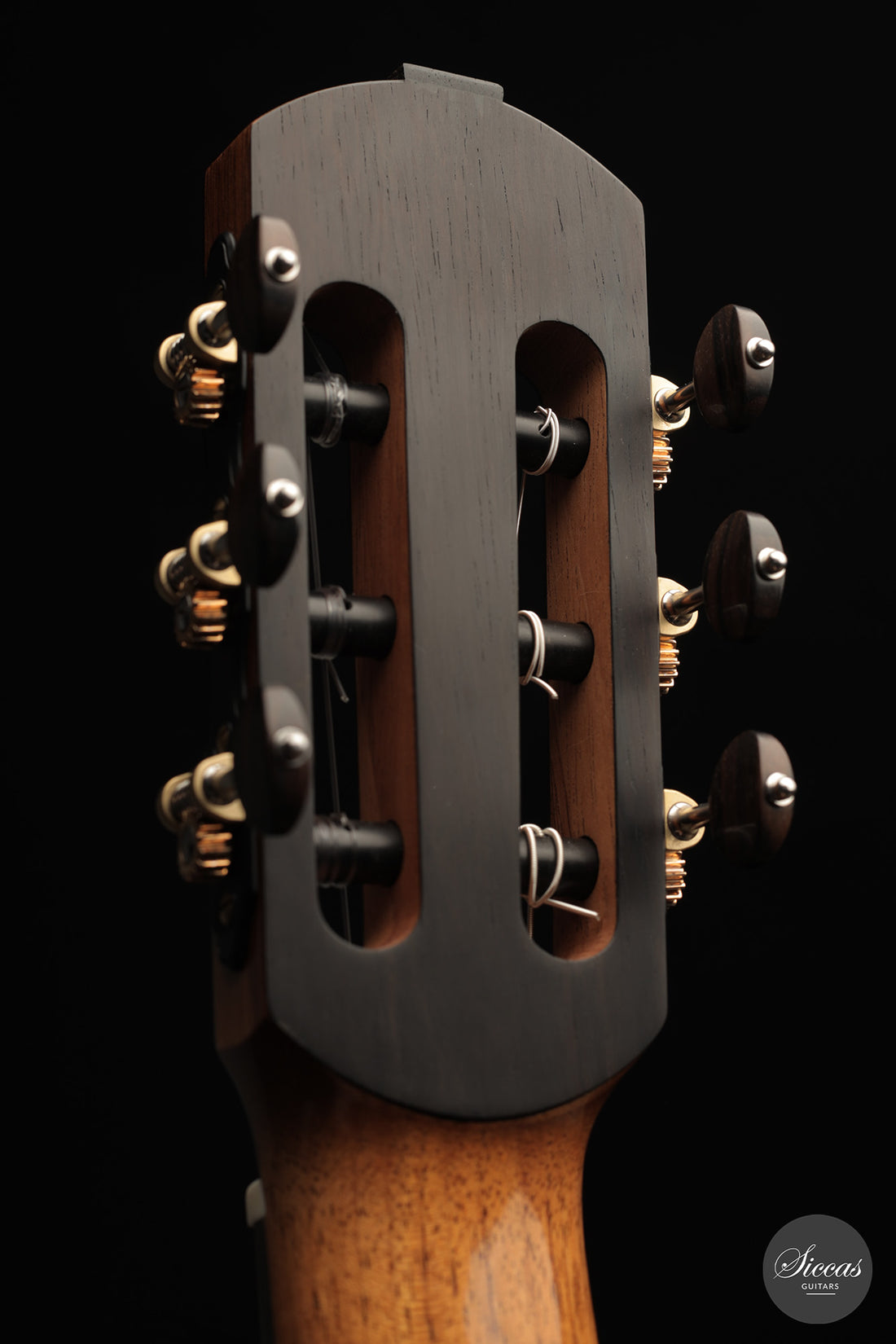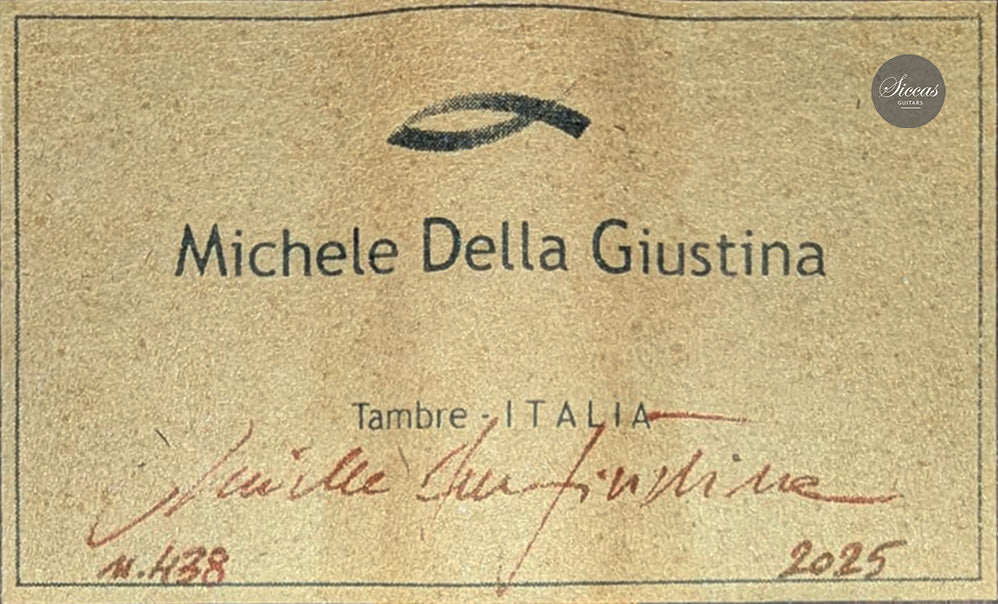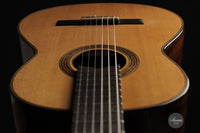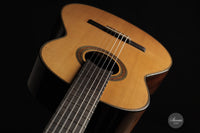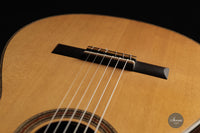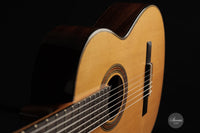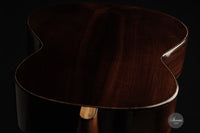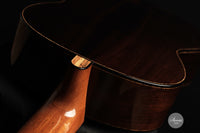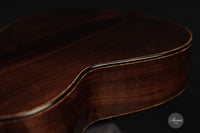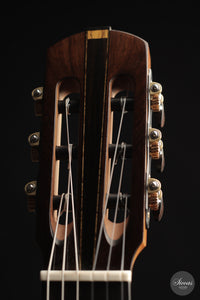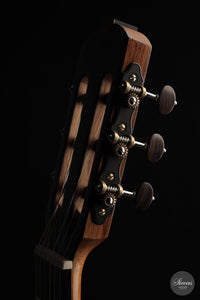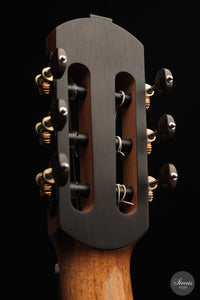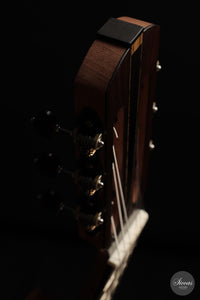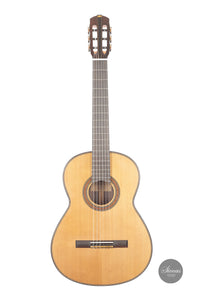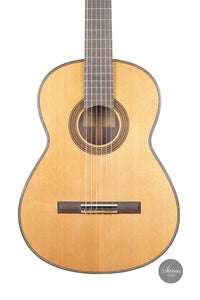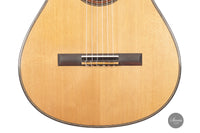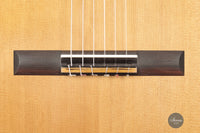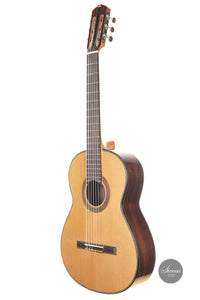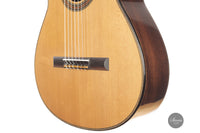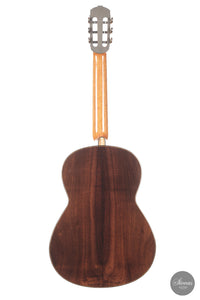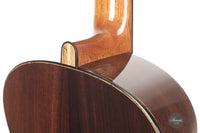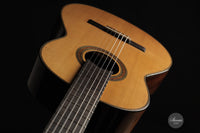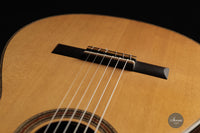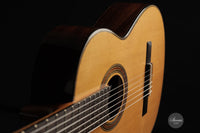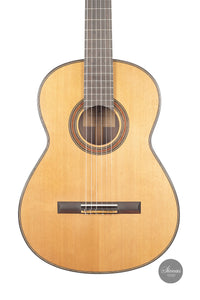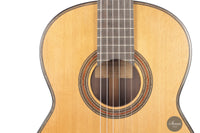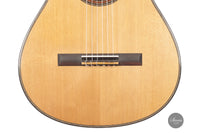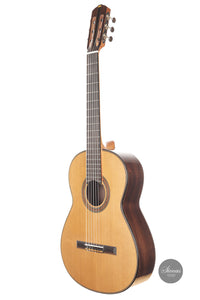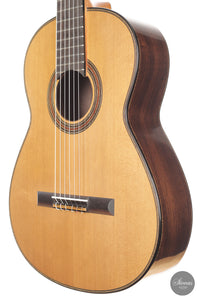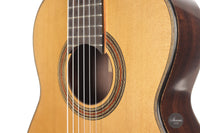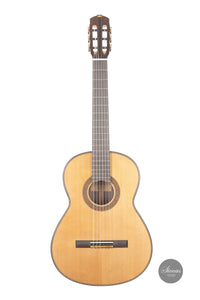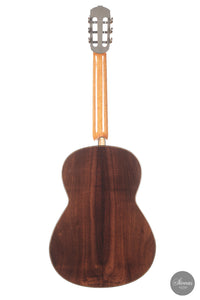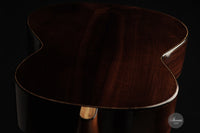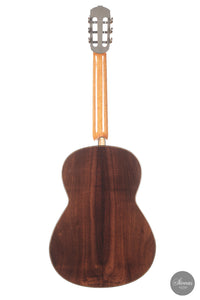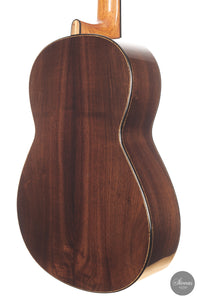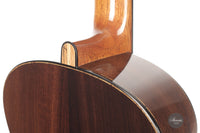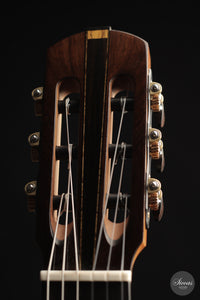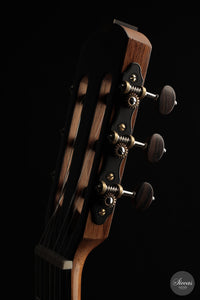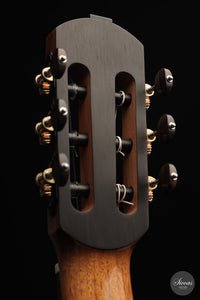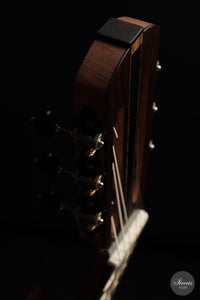Michele Della Giustina - 2025 No. 438
Michele Della Giustina - 2025 No. 438
Details
Details
Overview
Overview
Shipping important note
Shipping important note
Delivery times are typically reliable and most instruments arrive within the estimated timeframe.
Should any unexpected delay occur, our team will keep you informed and provide support at every step. For all shipping details and exceptions, please see our Shipping Policy.
Details about GPSR
Details about GPSR
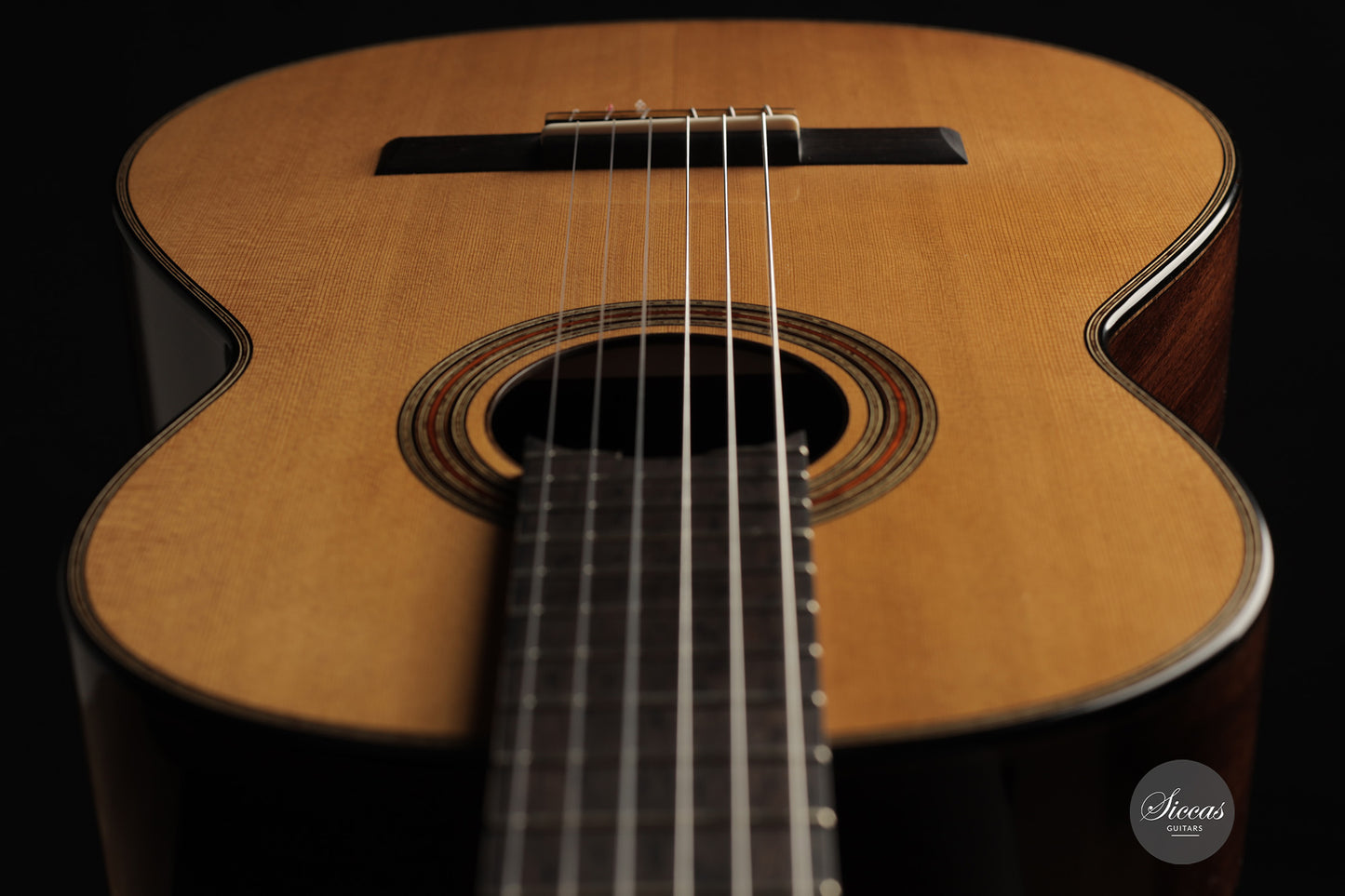
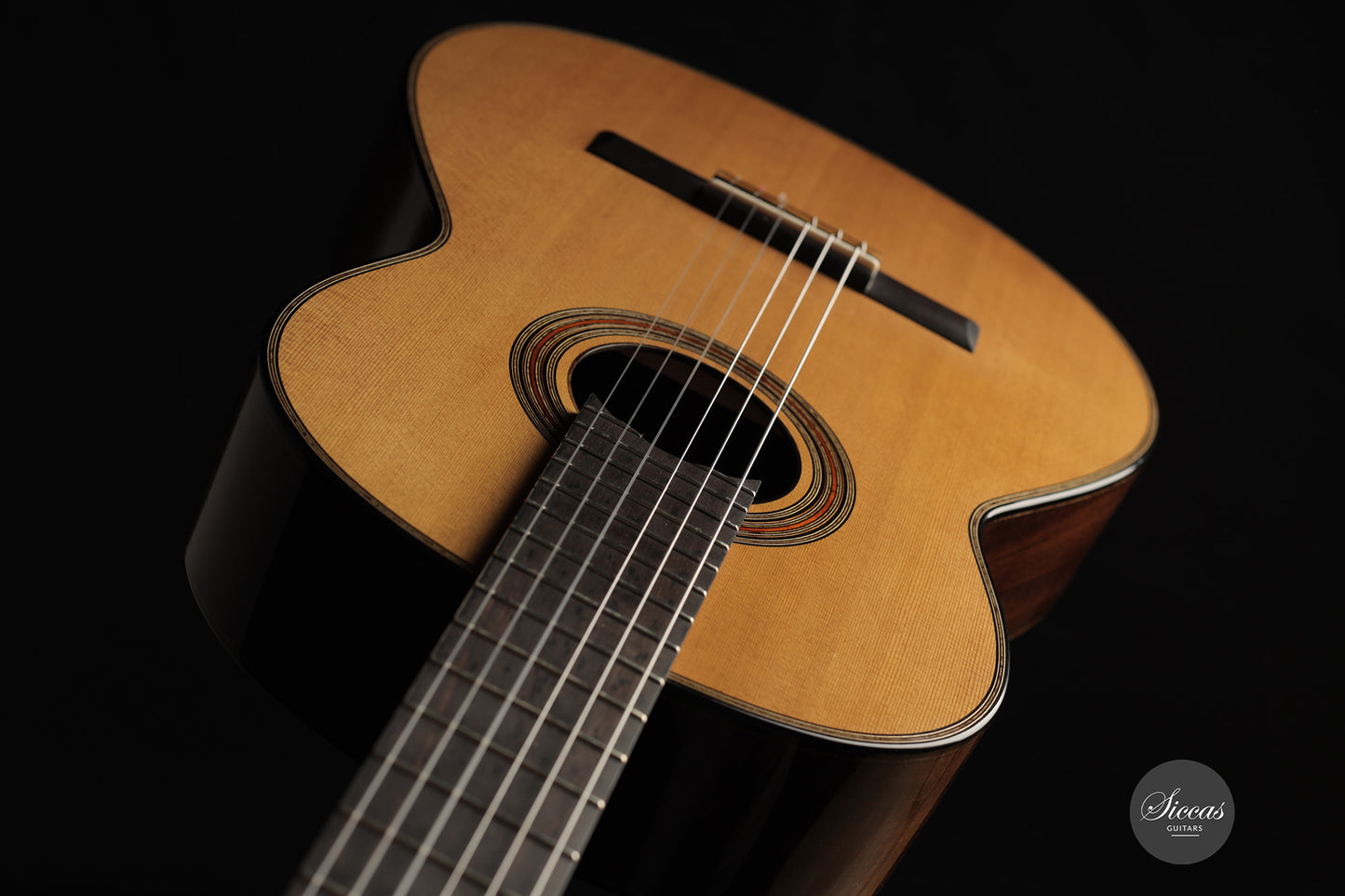


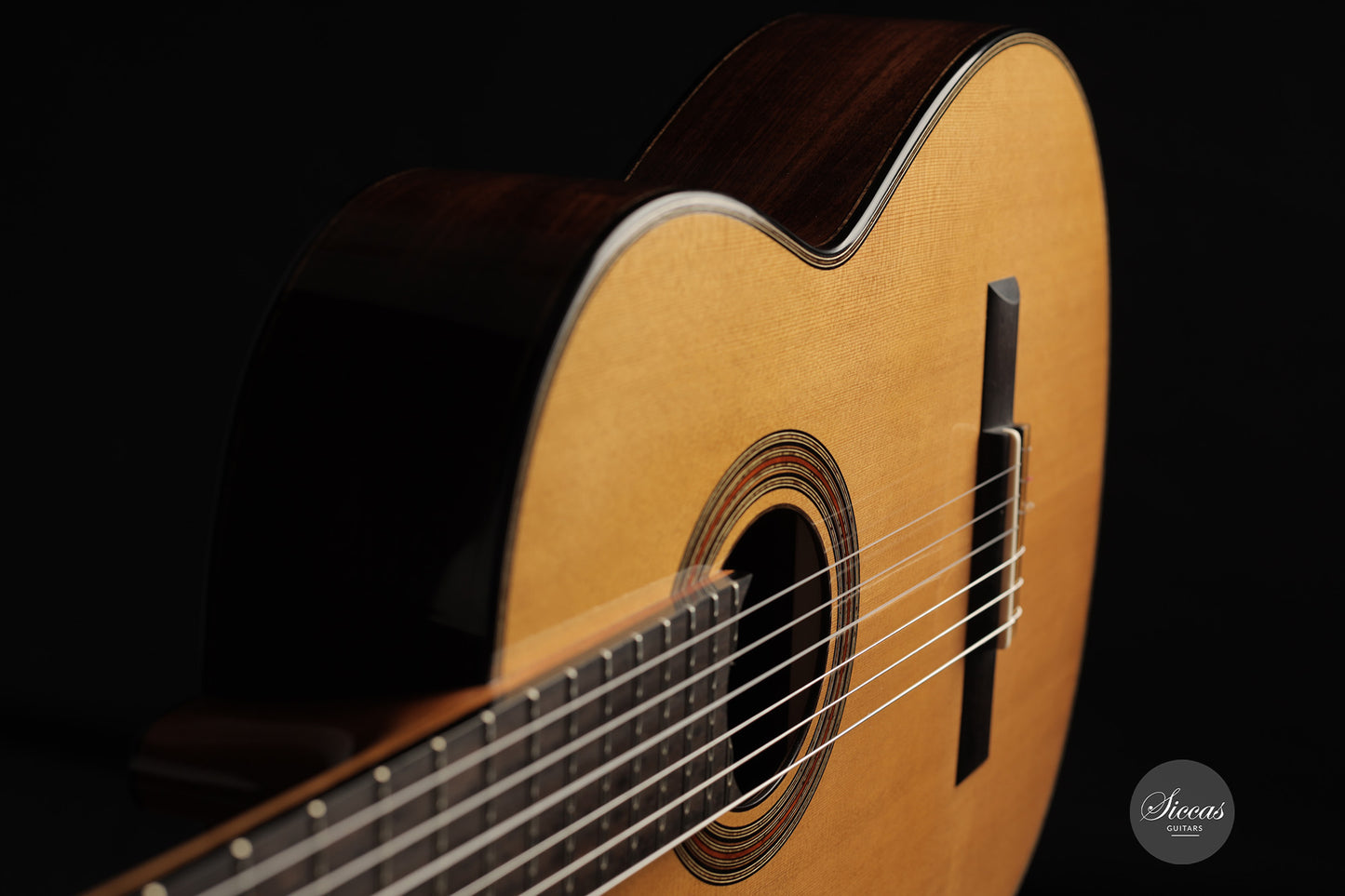
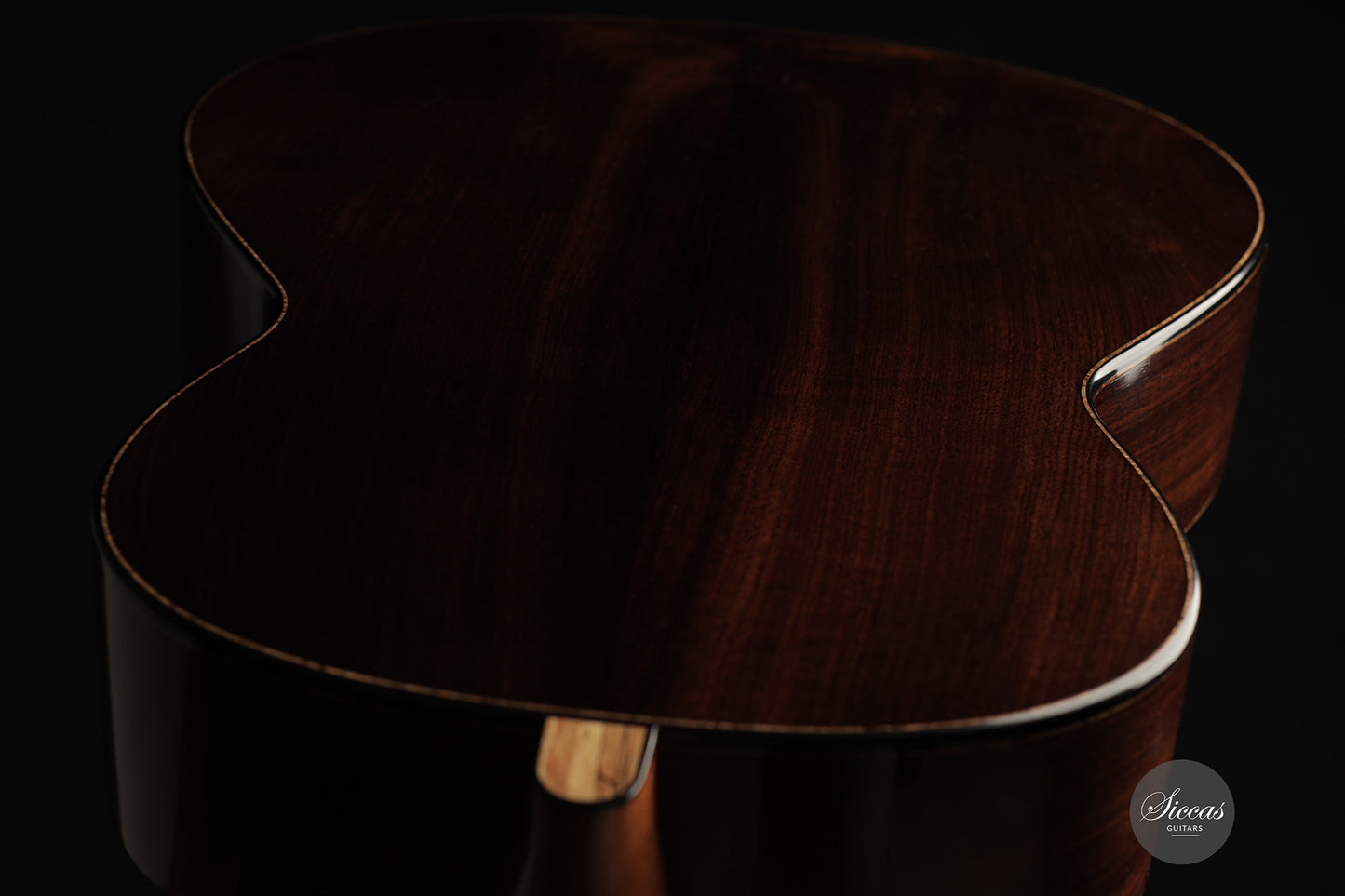

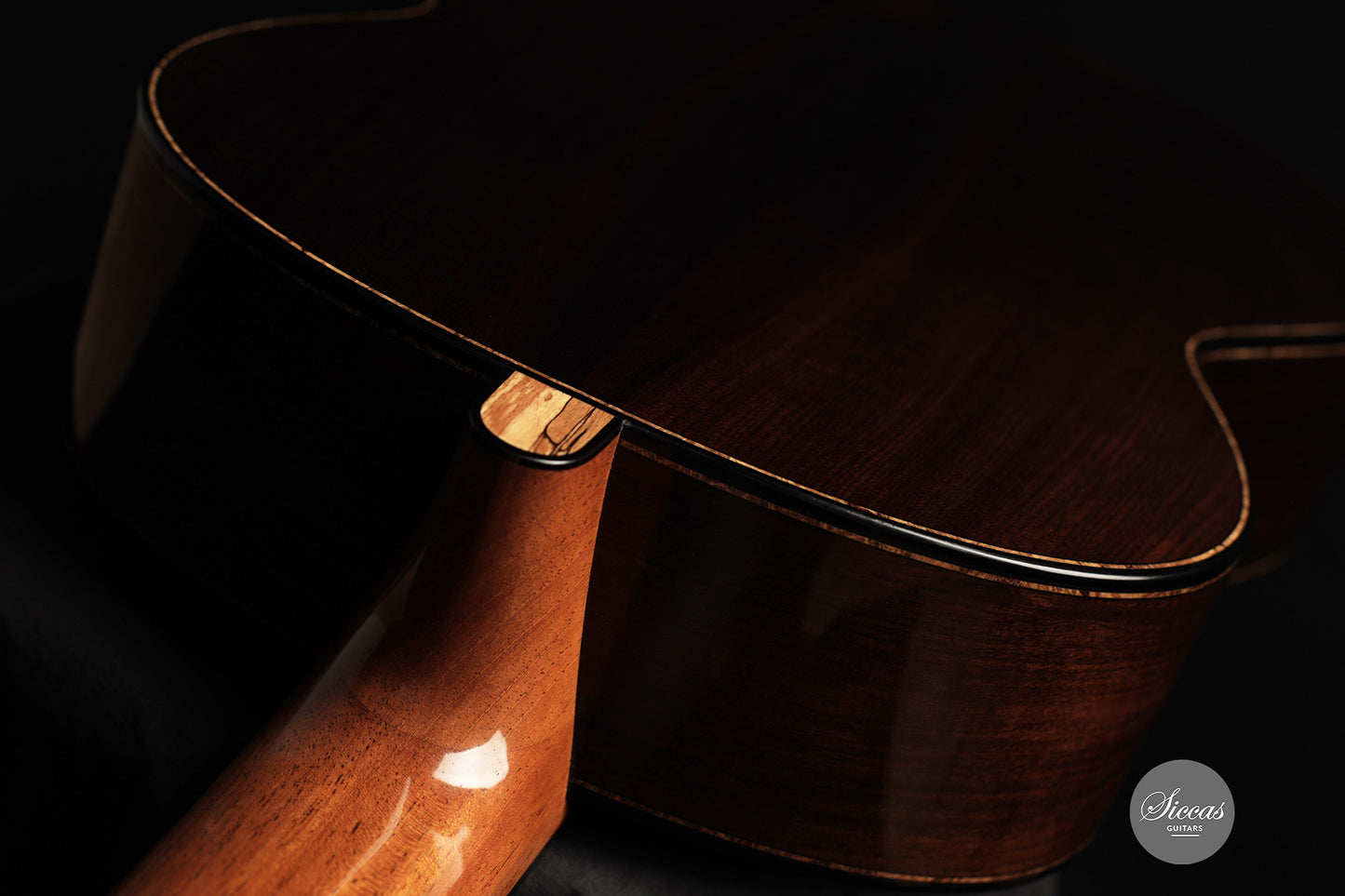

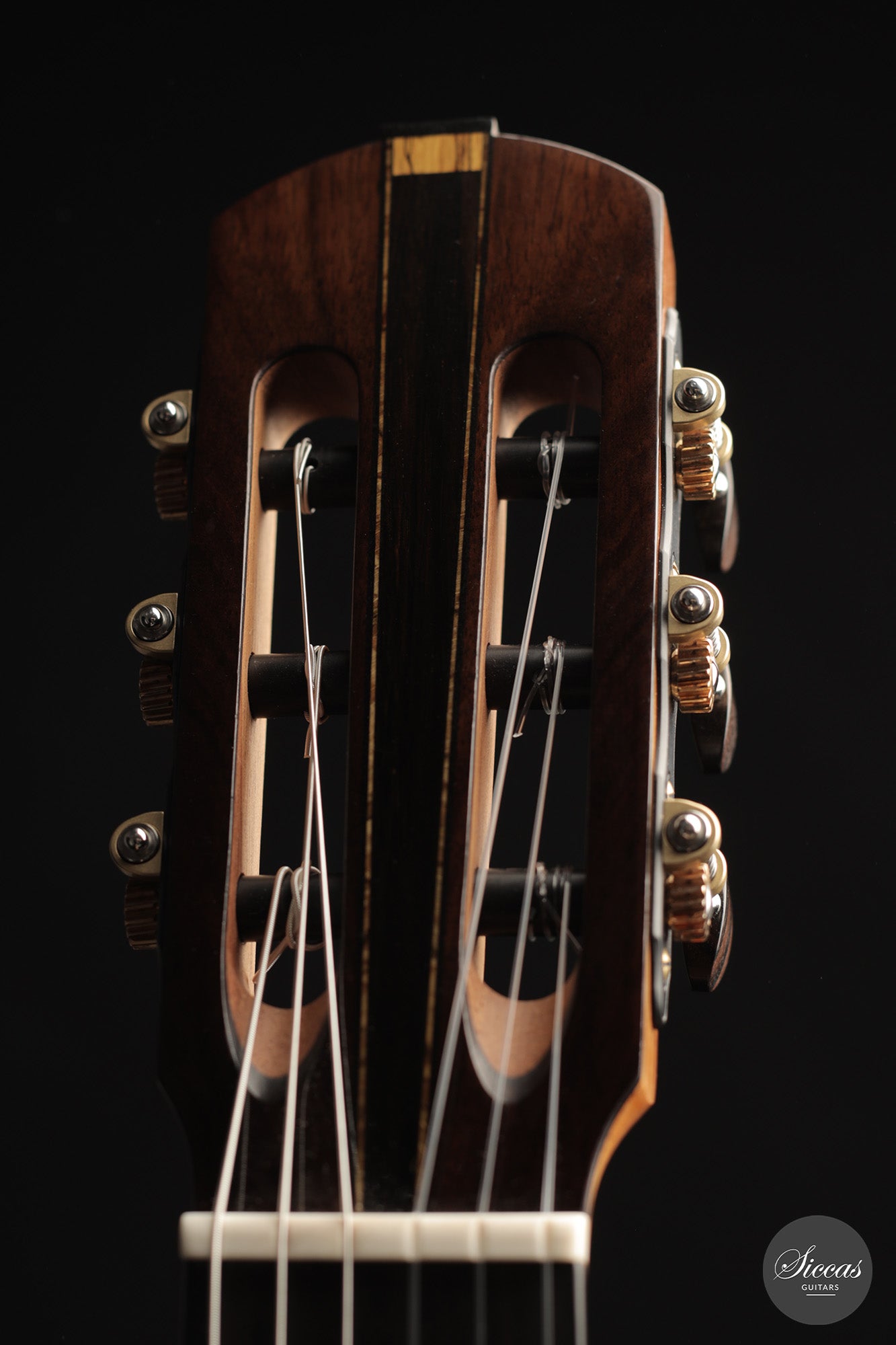

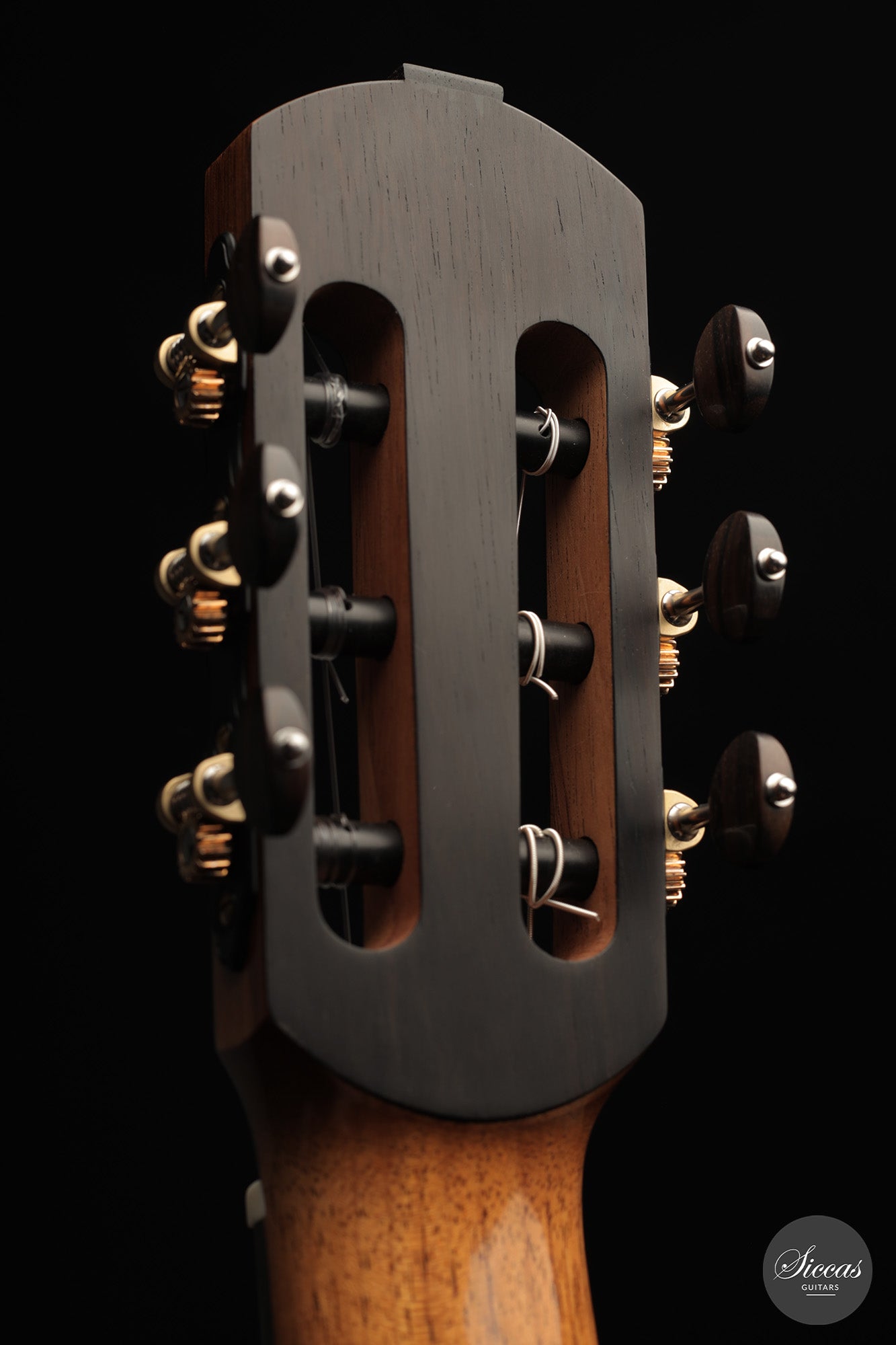

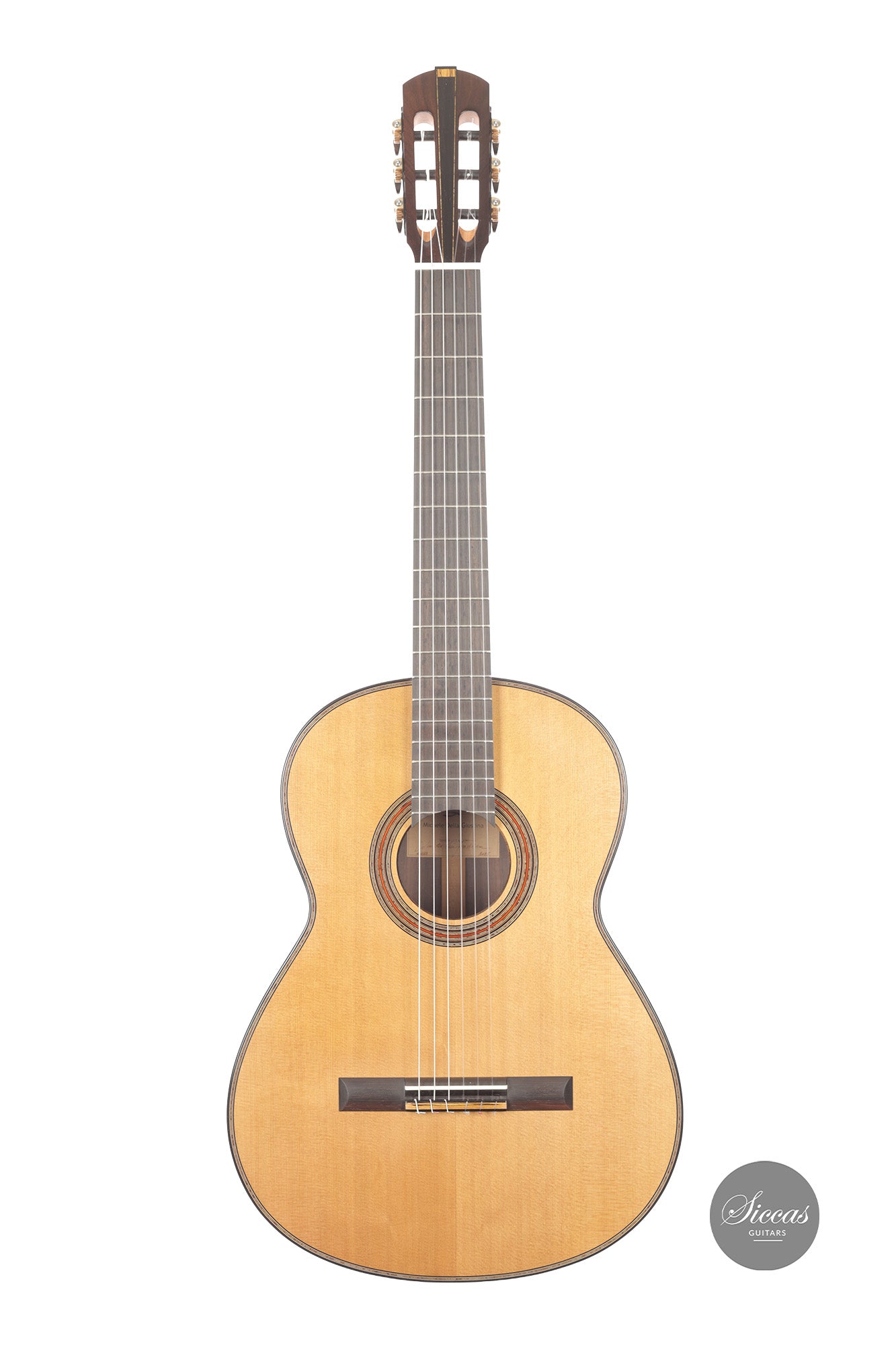

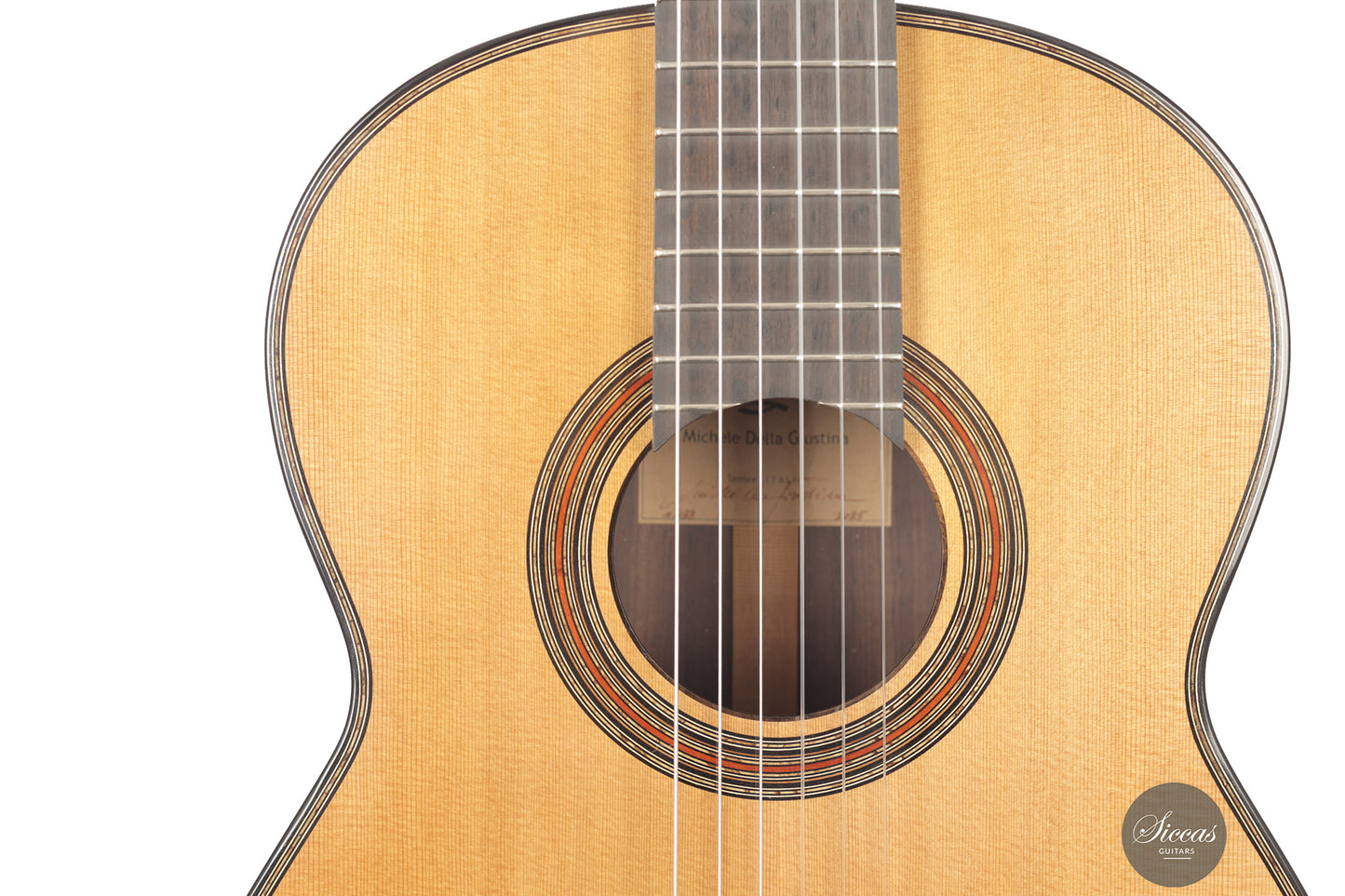




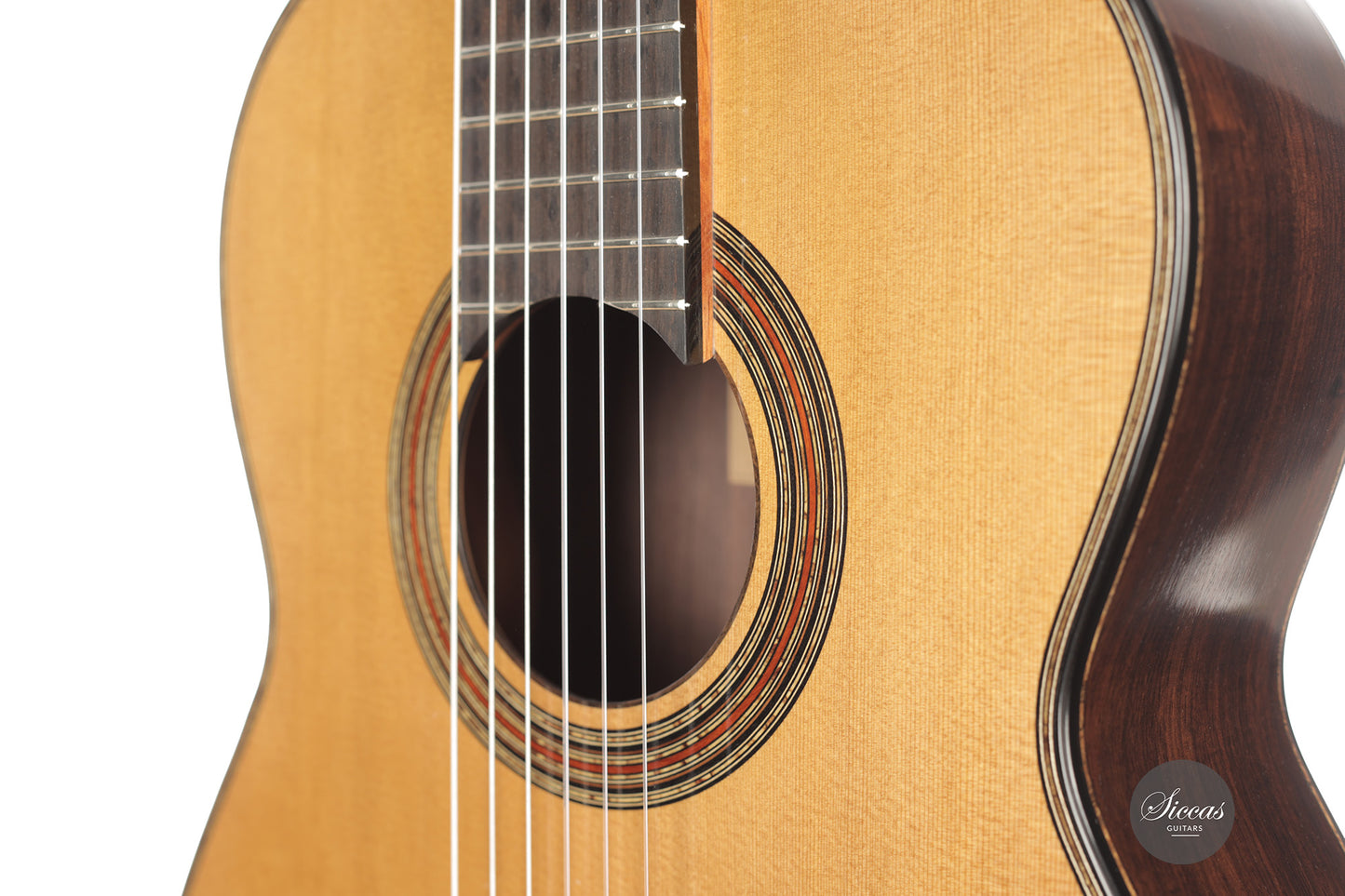
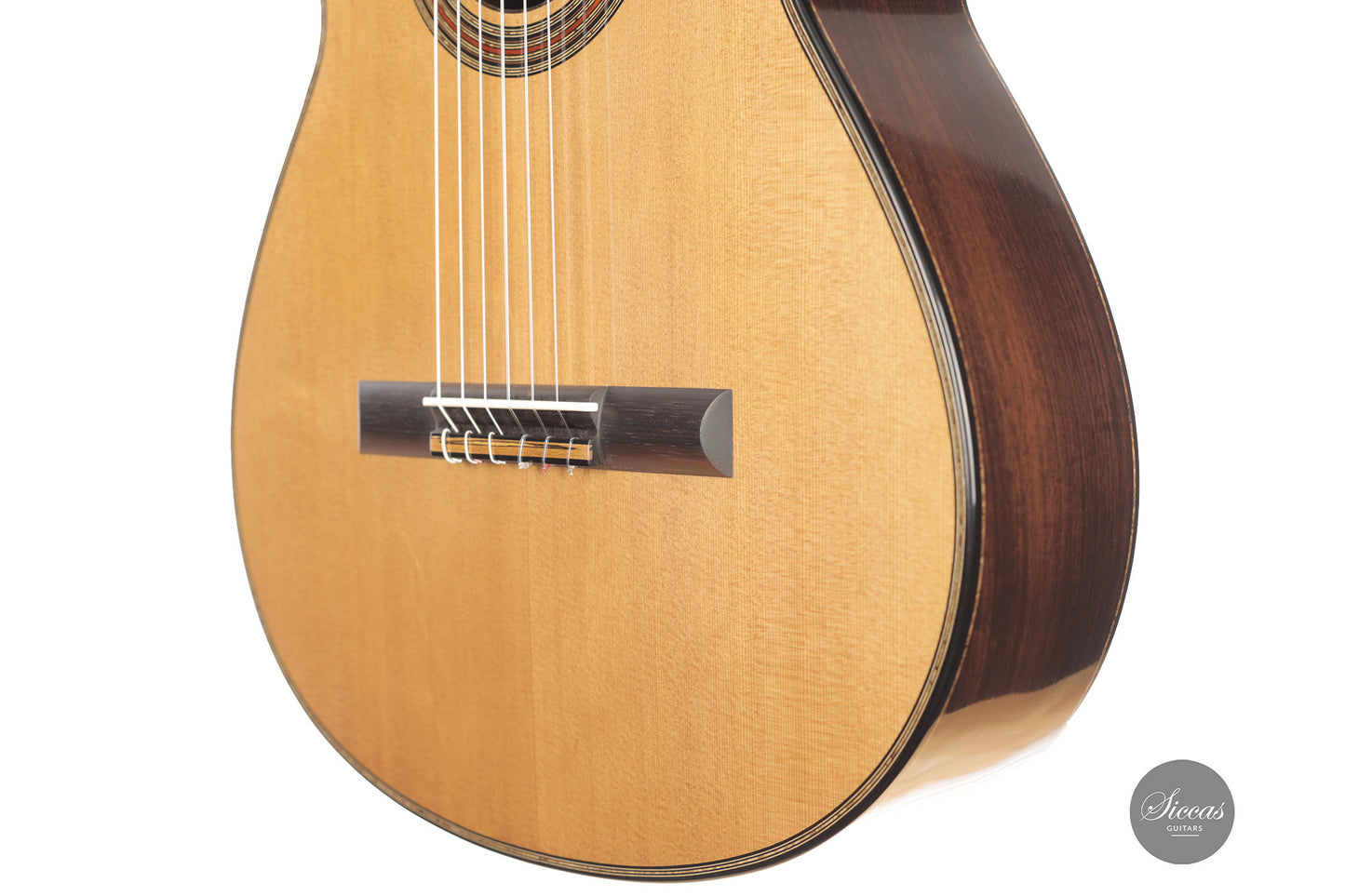
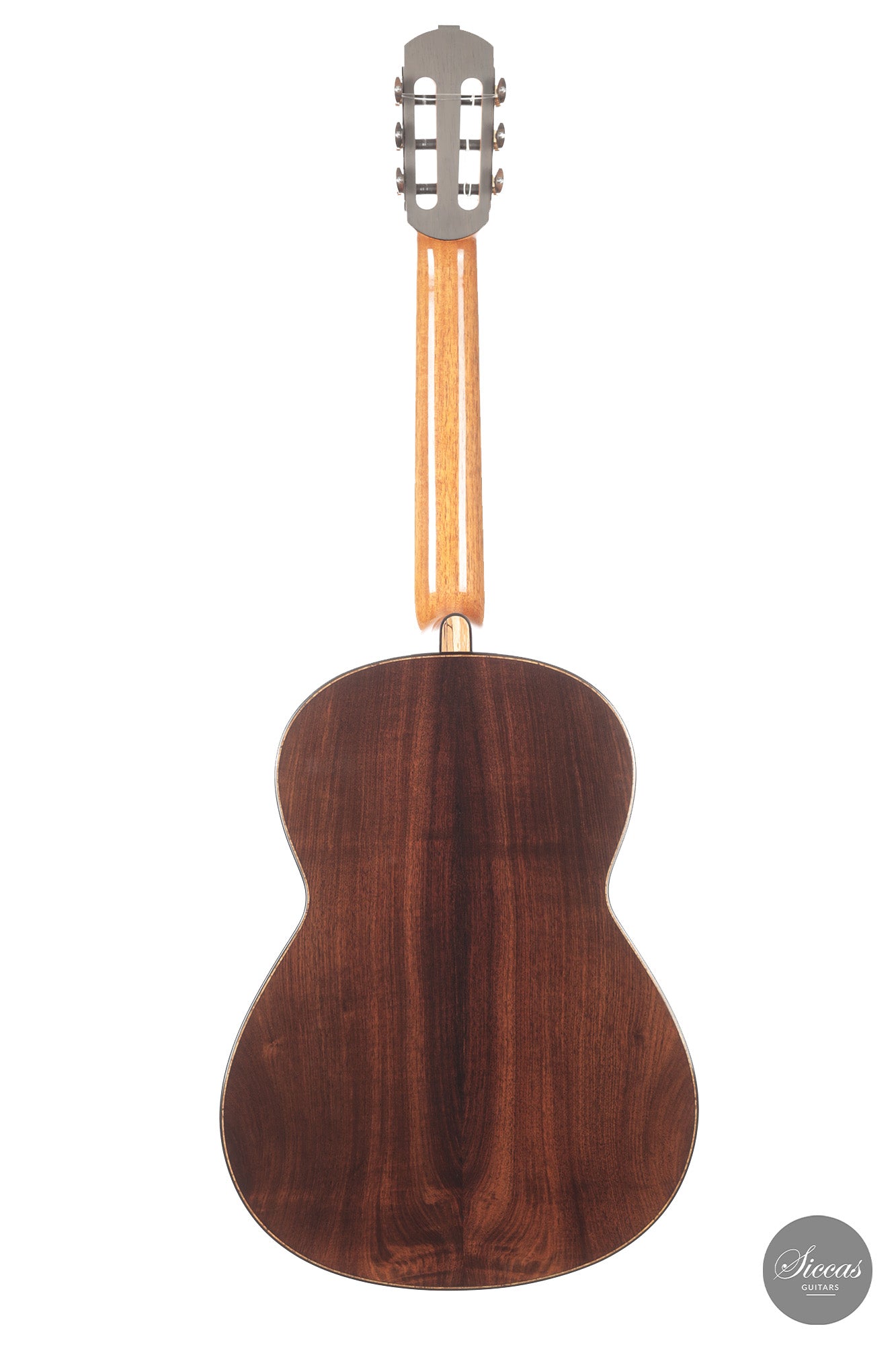

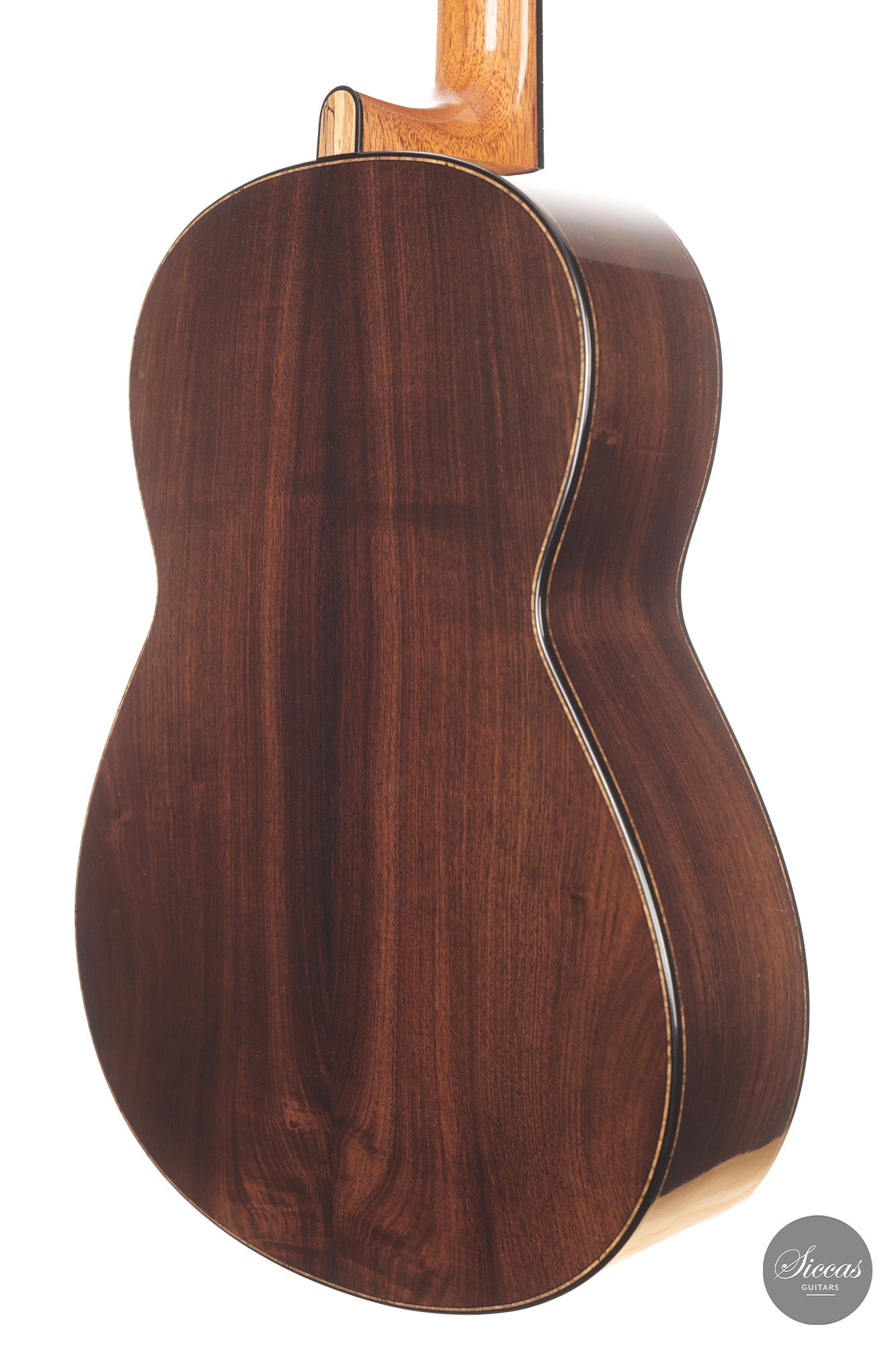
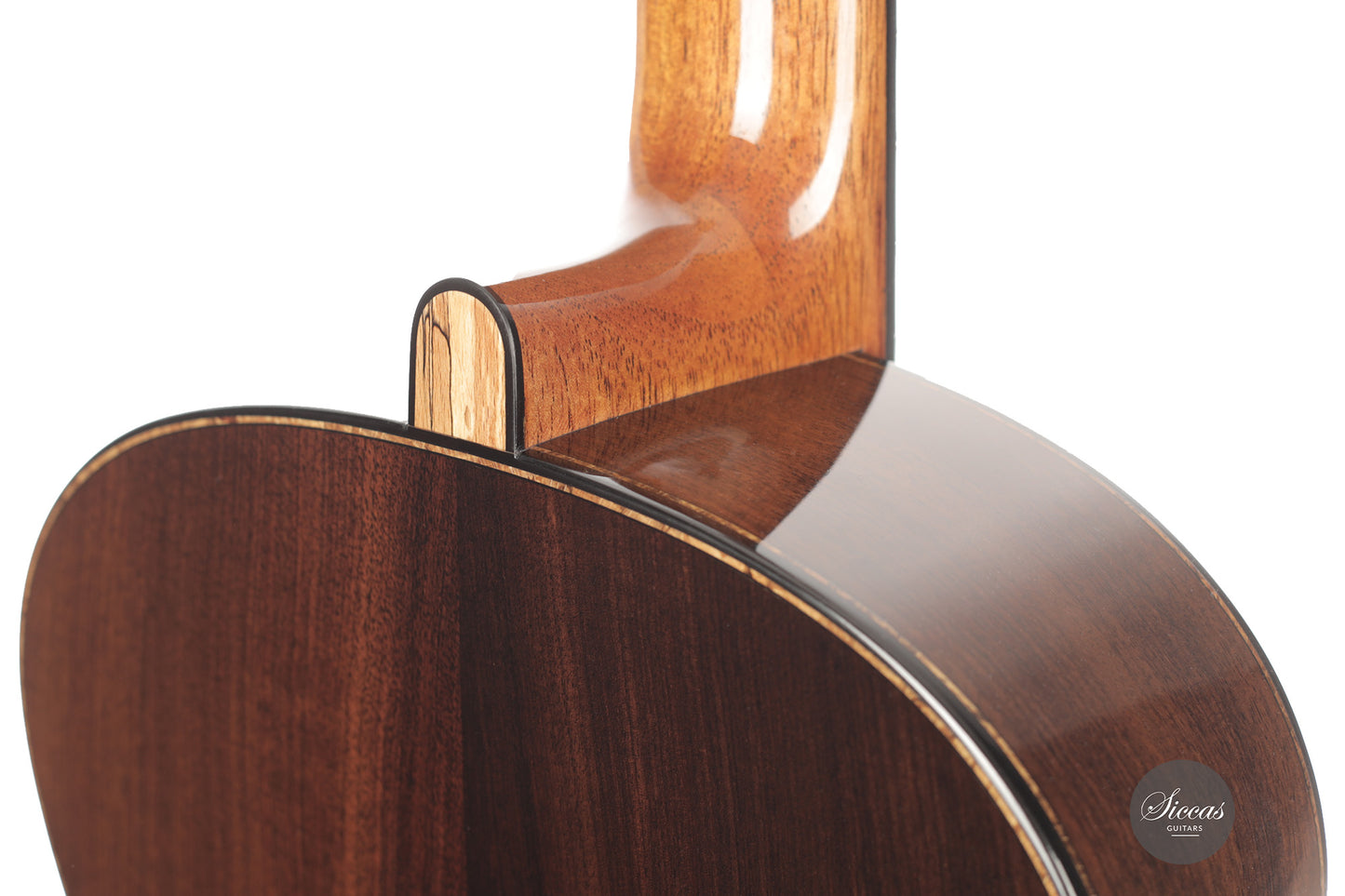
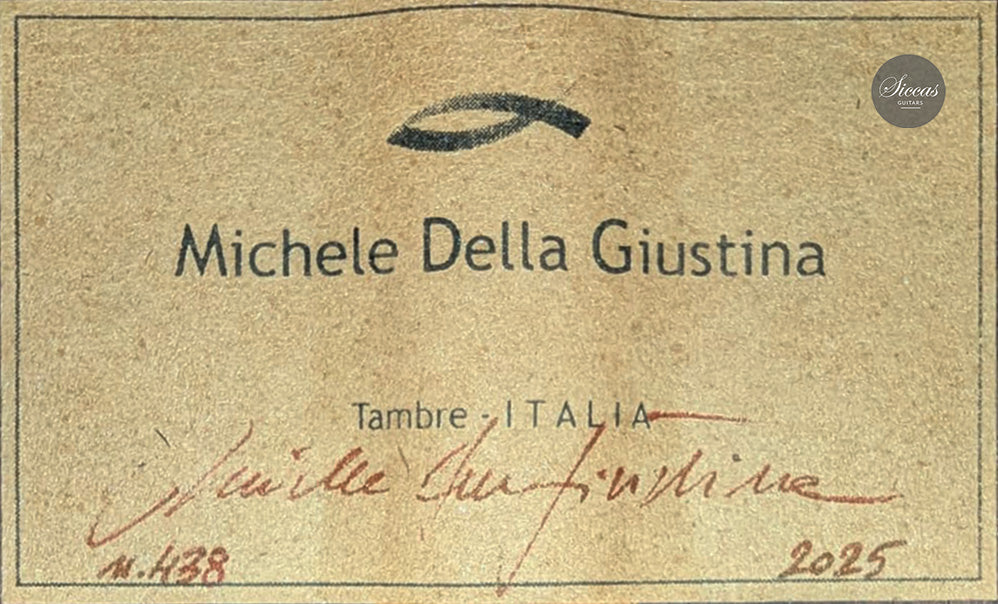
Video overview


More details about the guitar
About the luthier
Michele Della Giustina, a master luthier born in Vittorio Veneto in 1962, has carved a distinguished niche in the world of classical guitar making since graduating from the Udine Conservatory in 1990. His journey into luthiery began under the tutelage of Maestro Carlo Raspagni, from whom he learned the foundational skills and philosophies that would guide his career. Della Giustina's craft took a significant turn upon meeting Kazuo Sato, a Japanese luthier whose influence spurred a successful collaboration with the Niibori Guitar Music Academy in Japan, leading to a notable conference on violin making at their Tokyo headquarters in 2003.
The year 2004 marked a pivotal point in Della Giustina's career as he hosted Hiroyuki Arai, a young luthier student from Japan, for two months. This mentorship not only enriched Arai's craftsmanship but also strengthened Della Giustina's international connections. His participation in the Guitar Foundation of America (GFA) Conventions in Montreal (2004) and Columbus–Atlanta (2006) opened the doors to the American market, further amplified by an invitation to New York by NBC journalist Ramon Zayas, who introduced him to the East Coast's guitar scene.
In 2007, Della Giustina was a guest of Maestro Danny Yeh at the Shanghai Conservatory, where he held a conference on violin making during the Quindao guitar festival, showcasing his instruments to a new audience. More recently, in 2023, he was honored at the National Music Institute in Krakow, Poland, for an event dedicated to classical guitar, highlighting his enduring influence in the guitar-making world. Della Giustina's guitars, which now number over 420, are esteemed by musicians across Japan, the United States, China, South Korea, Taiwan, Colombia, Brazil, Europe, and Italy.
His instruments are a testament to his deep study of the great masters of the past and a profound understanding of the acoustic properties of woods. Combining traditional methods with a keen eye on the needs of contemporary concerts, Della Giustina has also focused on developing an "Italian" conception tool using spruce and maple to produce a sound that resonates with the great guitar-making tradition of Italy. Simultaneously, he is innovating with a "concept" guitar featuring a Sinker Cedar top and Bog Oak back and sides, aiming to create a sound that bridges the archaic and the modern.
Beyond his craftsmanship, Della Giustina has dedicated himself to teaching the art of guitar making, guiding around twenty students in building their guitars in his workshop. He resides and works in a mountain town in the province of Belluno, surrounded by the beauty of nature, his wife Viviana, their son Vassili, and a menagerie of domestic and wild animals, contributing to the rich tapestry of the Italian luthiery tradition.
About the guitar
This 2025 double-top guitar, bearing the serial number 438, reflects a deeply personal vision of what a modern concert instrument can be. Its soundboard features a balsa core with an Italian spruce inner layer and a golden-hued cedar outer top. The builder makes no secret of his artistic direction: “I’ve never made copies, even though I studied the great masters. I focus on a sound that looks into the future, not back.” His aim is not sheer power, but the ability to project naturally, filling the room with a voice of depth and resonance rather than aggression.
To achieve this, he draws constant inspiration from the human voice — not for its volume, but for its emotional and acoustic range. “I think of people who speak softly but carry depth — their voice tells of lived experience, of joy and sorrow.” This ideal finds expression in a tone that is round, luminous, and unfailingly musical. The sound is smooth and balanced, combining warmth with clarity, and a refined softness that invites the listener in. It retains the characteristic depth of the double-top concept while preserving a broad palette of tonal colors and subtle dynamic shading. Notes emerge effortlessly, and the instrument answers instantly to the player’s touch, giving a sense of precision and ease.
The sides of the guitar are of a distinctive laminated construction: doubled with a cedar braces that are sandwiched between the inner and outer layers. This original concept results in exceptional rigidity and stability while keeping the overall weight remarkably low. Made from wild Indian rosewood, both the sides and the back contribute to a sound that is focused, resonant, and generously projected. Five parallel braces under the top support this flexibility, combining with a short 640 mm scale and an elevated fingerboard to provide ease of access and physical comfort.
Equally vital is the instrument’s vibrant interaction with the player. “I work a lot on the elasticity of the vibrating system,” the maker explains, “so that the performer feels physically at ease.” His attention to the elastic response ensures a lively tactile feedback — a direct line from hand to sound. This immediacy makes it possible to unlock both technical clarity and tonal color, all in the service of musical freedom. Players describe the experience as secure and effortless, with an unusual sense of comfort even in rapid passages.
Visually, the instrument offers refined complexity. A transparent French polish finish enhances the natural beauty of its materials: the luminous cedar top, the dramatic figures in the wild Indian rosewood, and the pale, weathered beech used for decorative elements. This locally sourced beech — used on the rosette and purflings, and echoed at the heel, bottom joint, tie-block mosaic, and headstock — comes from the luthier’s own region and develops its unique patterns over time as a result of exposure to the elements. Distinctive material contrasts are subtly echoed across the instrument: the dark Makassar ebony of the bridge reappears on the Pagos tuner buttons, while the tuners’ black aluminum plate is mirrored by the oiled Madagascar veneer on the underside of the headstock, and the light, figured beech provides a natural counterpoint. “It’s a wood that in theory is ‘ruined’, but to me it becomes something beautiful — nature’s own decoration, which came before us all.”
Regular care extends the life of the instrument
Even with careful use, a classical guitar may gradually change in appearance or respond to unstable storage conditions. Have a close look at your guitar regularly and be attentif to changes. If your instrument is suffering from its environement, it will let you know.
Protect Your Guitar: Handle with Care
Be mindful when touching your instrument with greasy or unwashed hands: any skin contact is a small attack on the varnish. Of course, a guitar is made to be played, but taking a few precautions helps preserve its beauty: wash your hands before playing, wear long sleeves, and avoid unnecessary direct skin contact with the body of the instrument.
Pro tip: Avoid playing with a button-up shirt, heavy jewelry, or a belt, as these can scratch the guitar. Also, make sure your guitar case is free of any objects that could damage the instrument during storage.
String care
A good habit to adopt is wiping down your strings briefly after each playing session. This small action significantly extends their lifespan and helps maintain a consistent, comfortable feel under your fingers.
Most importantly, clean strings are essential for keeping your instrument in tune. Corrosion, sweat, and dust can affect the uniformity of the strings and interfere with accurate tuning across the entire fingerboard.
Pro tip: If you're having trouble getting your guitar in tune, it might be time to change the strings. A useful test is to compare the pitch of the 12th fret harmonic with the fretted note at the 12th fret; if there's an unusually large gap between them, your strings may have lost their integrity and should be replaced.
Keep Your Shellac Finish Shining!
Got a guitar with a shellac (French polish) finish? Here's a simple trick: Take a clean microfiber cloth and gently breathe on the surface to create a light mist. Then, softly rub to remove fingerprints, sweat, and grease. That’s usually all it takes to keep it looking great, no products needed!
Pro tip: Every few years, treat your guitar to a check-up with a luthier to keep it in top shape.
Storing Your Guitar: Climate Matters
Your guitar can safely stay outside its case, as long as the surrounding environment maintains 42–55% humidity and a temperature between 18–25°C.
Keep in mind that humidity levels can still fluctuate inside the case, especially during seasonal changes.
- Too much humidity may cause overtightened strings and a dull tone.
- Too little humidity can lead to a bulging top, string buzz, or even cracks.
Avoid placing your guitar near radiators, air conditioners, or windows with direct sunlight.
Pro tip: Always close your guitar case while playing. This helps preserve a stable microclimate inside the case, so your instrument is protected the moment you put it back in.


